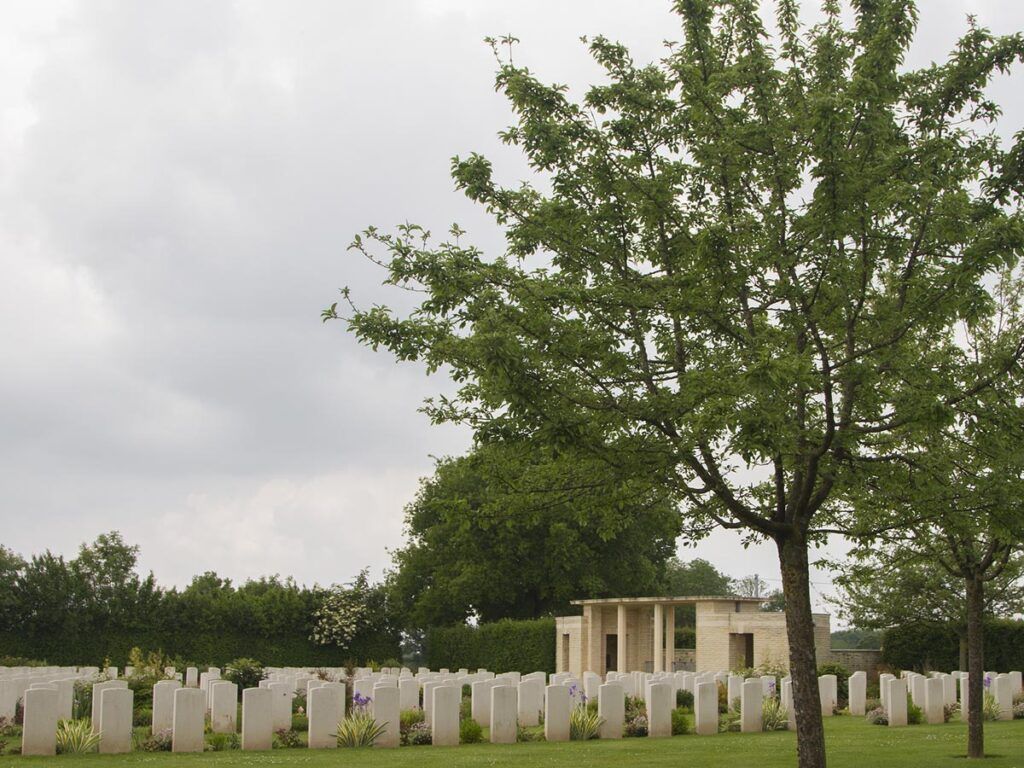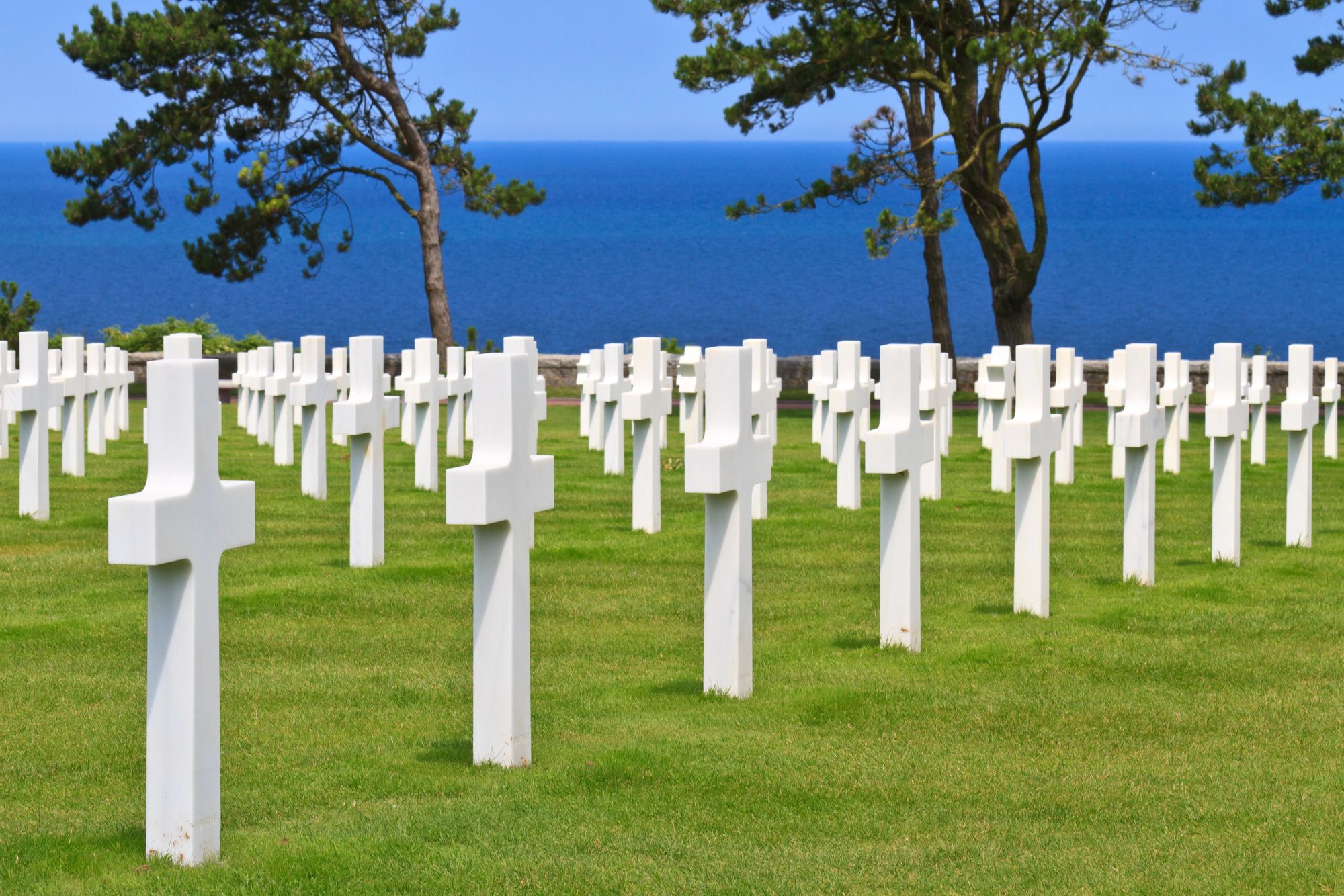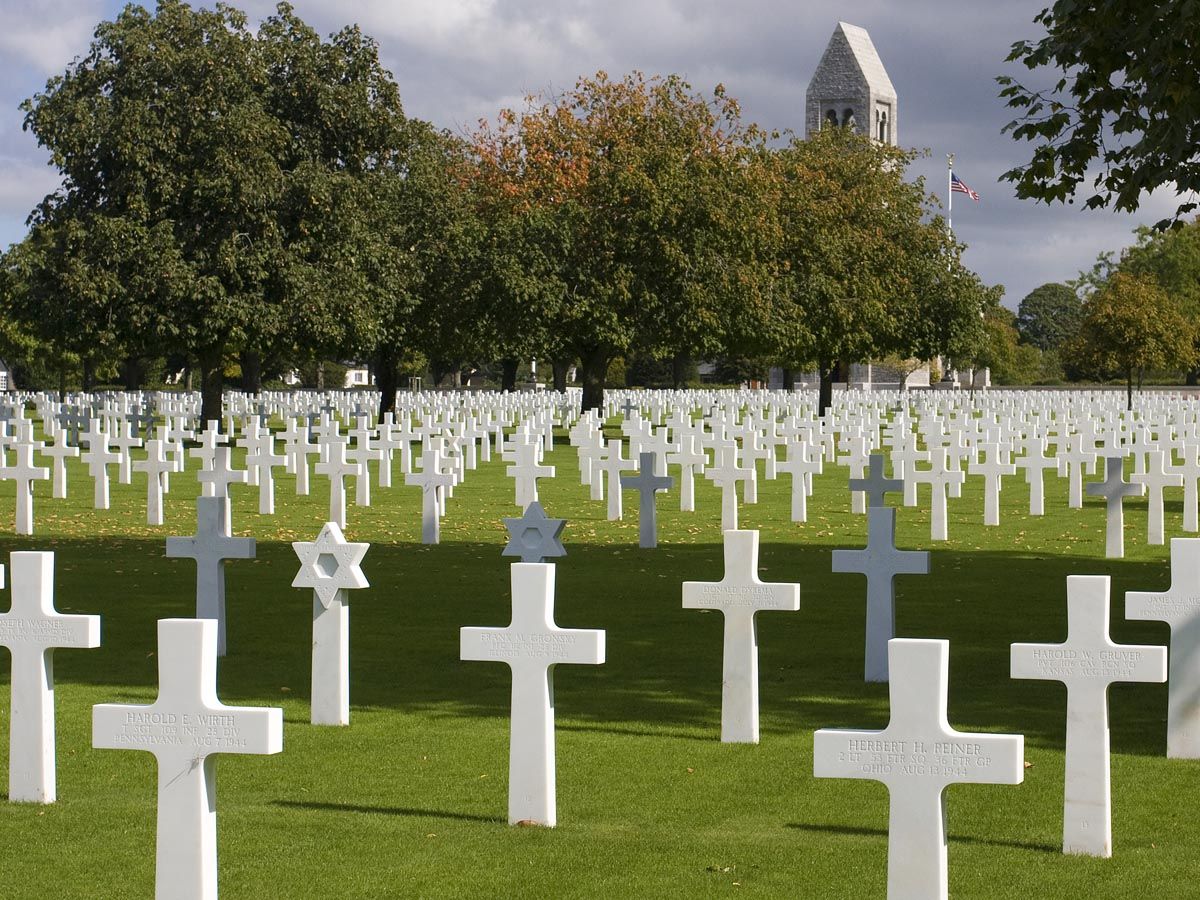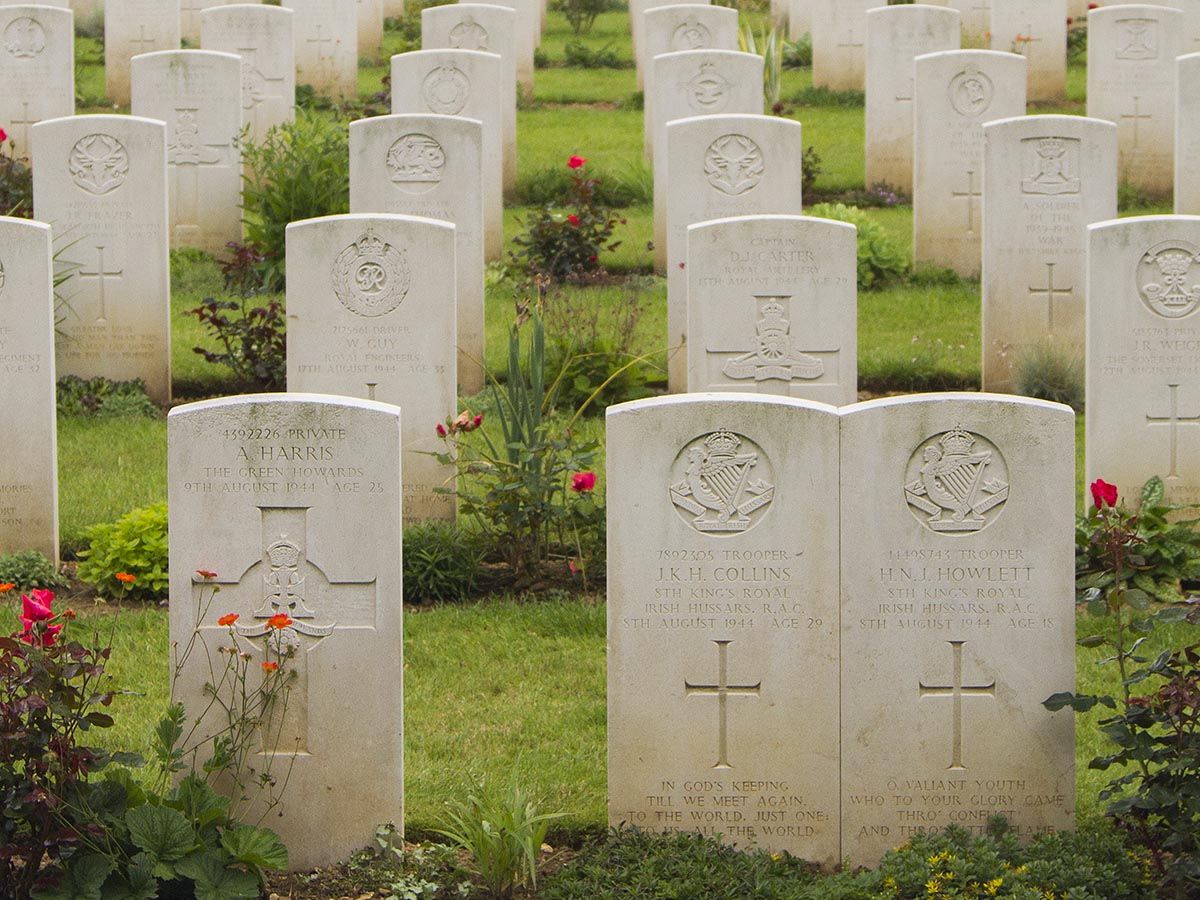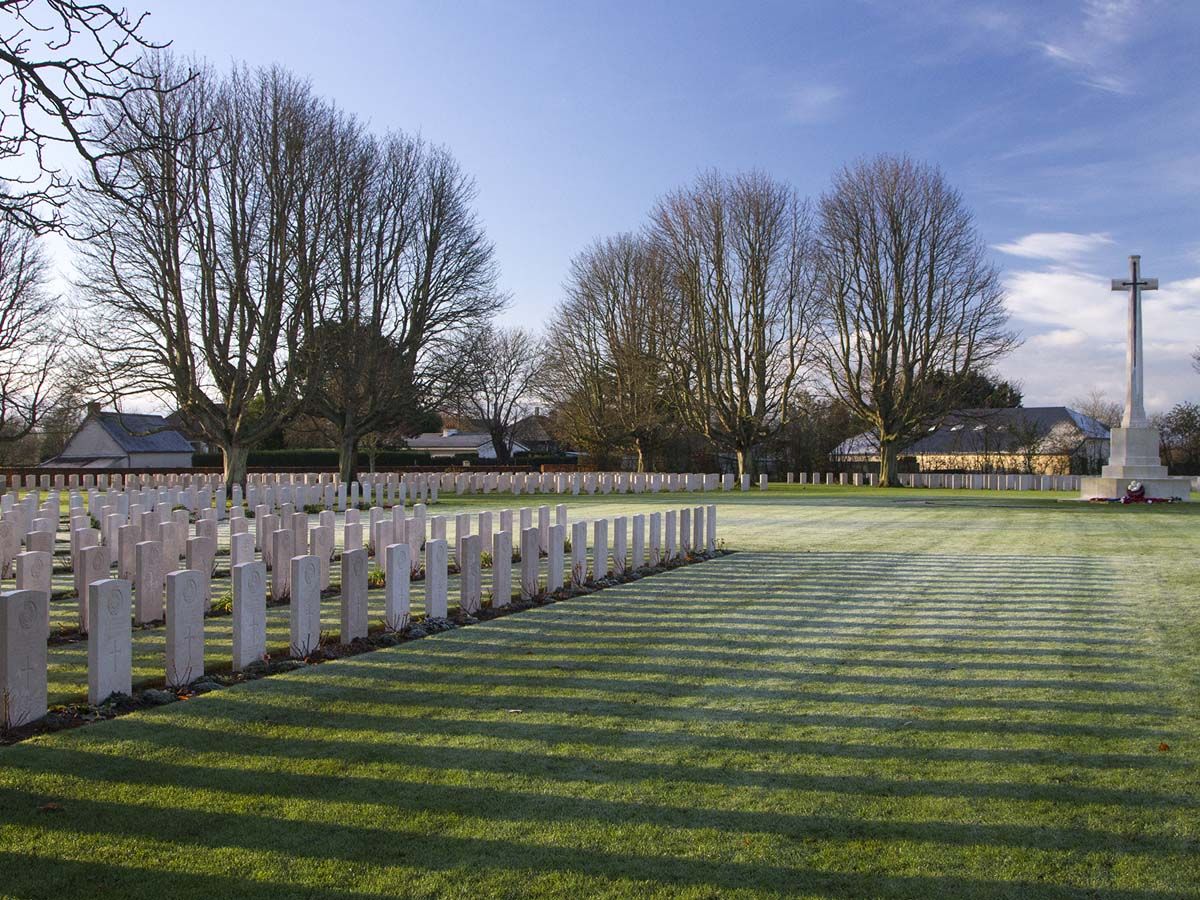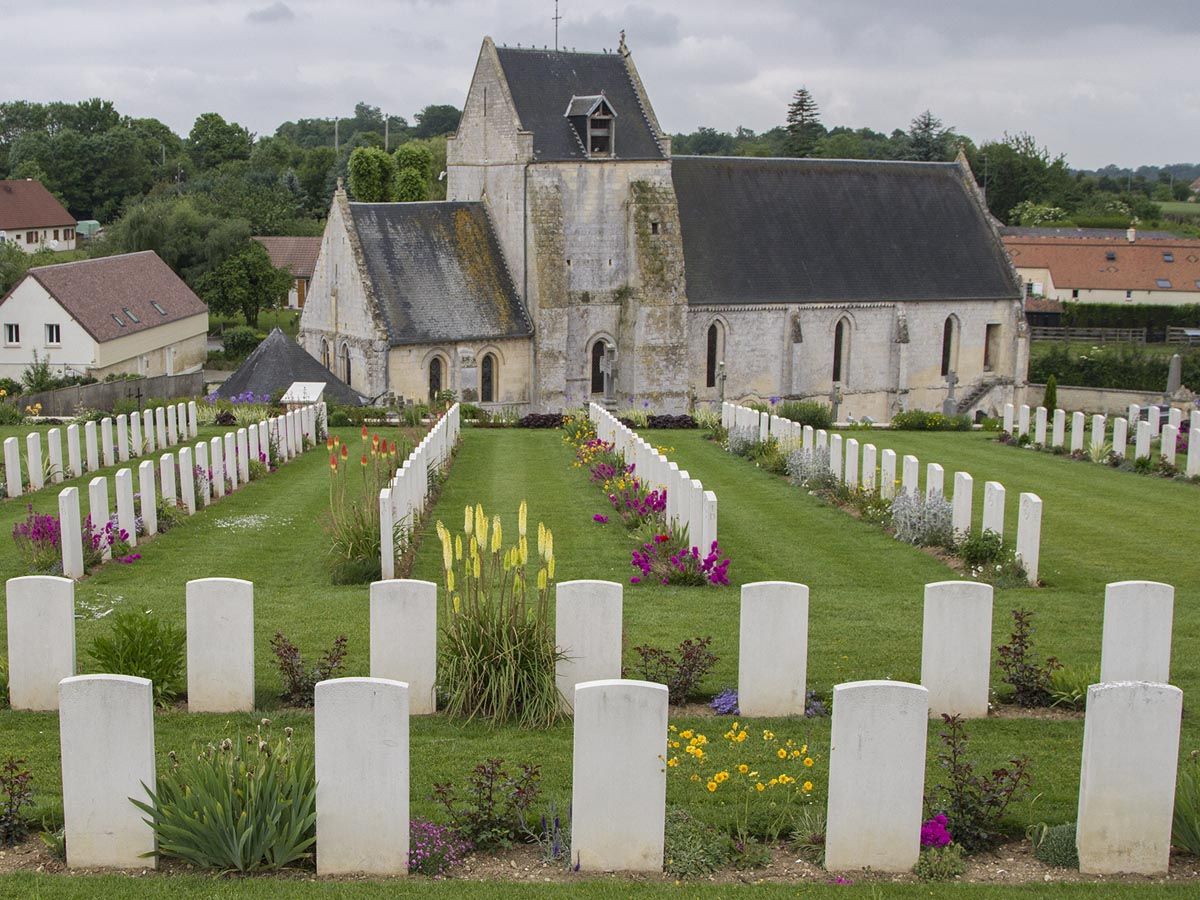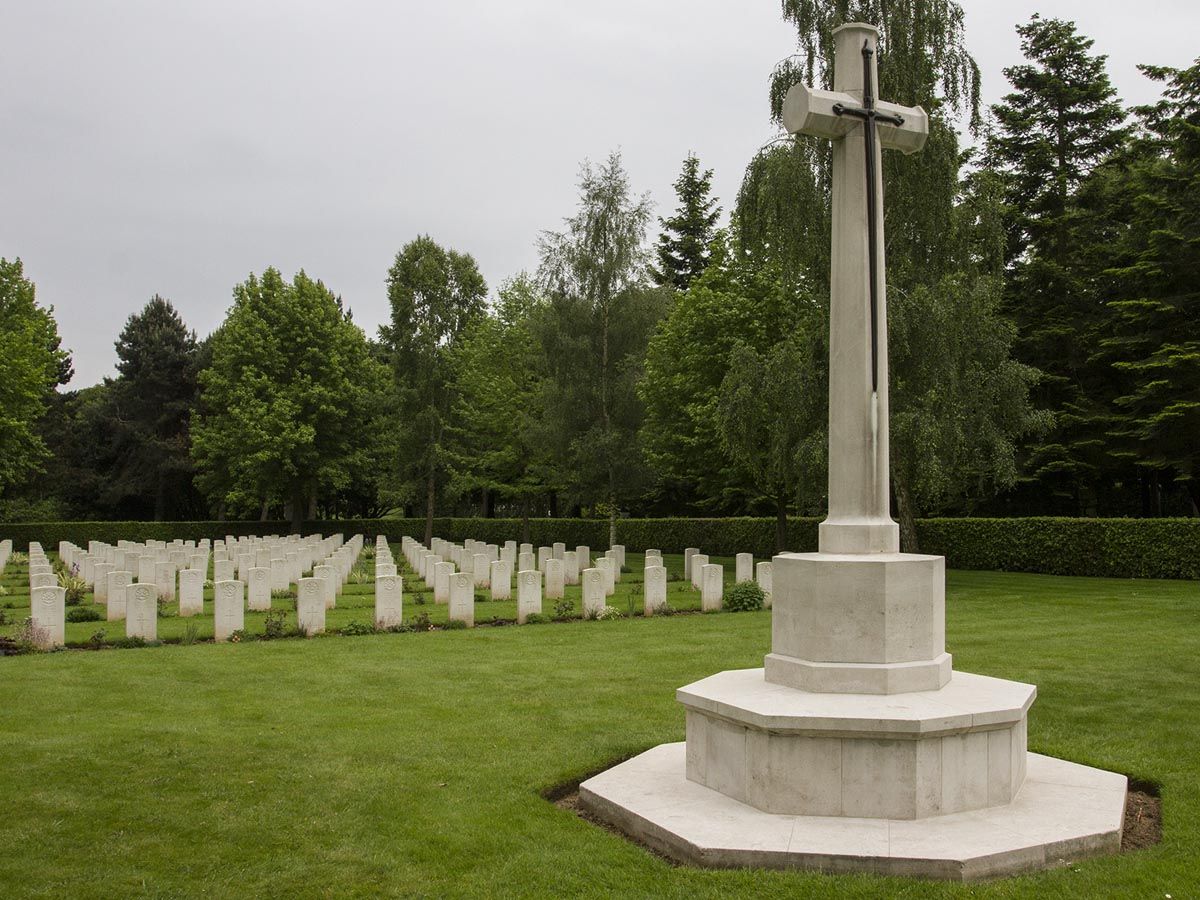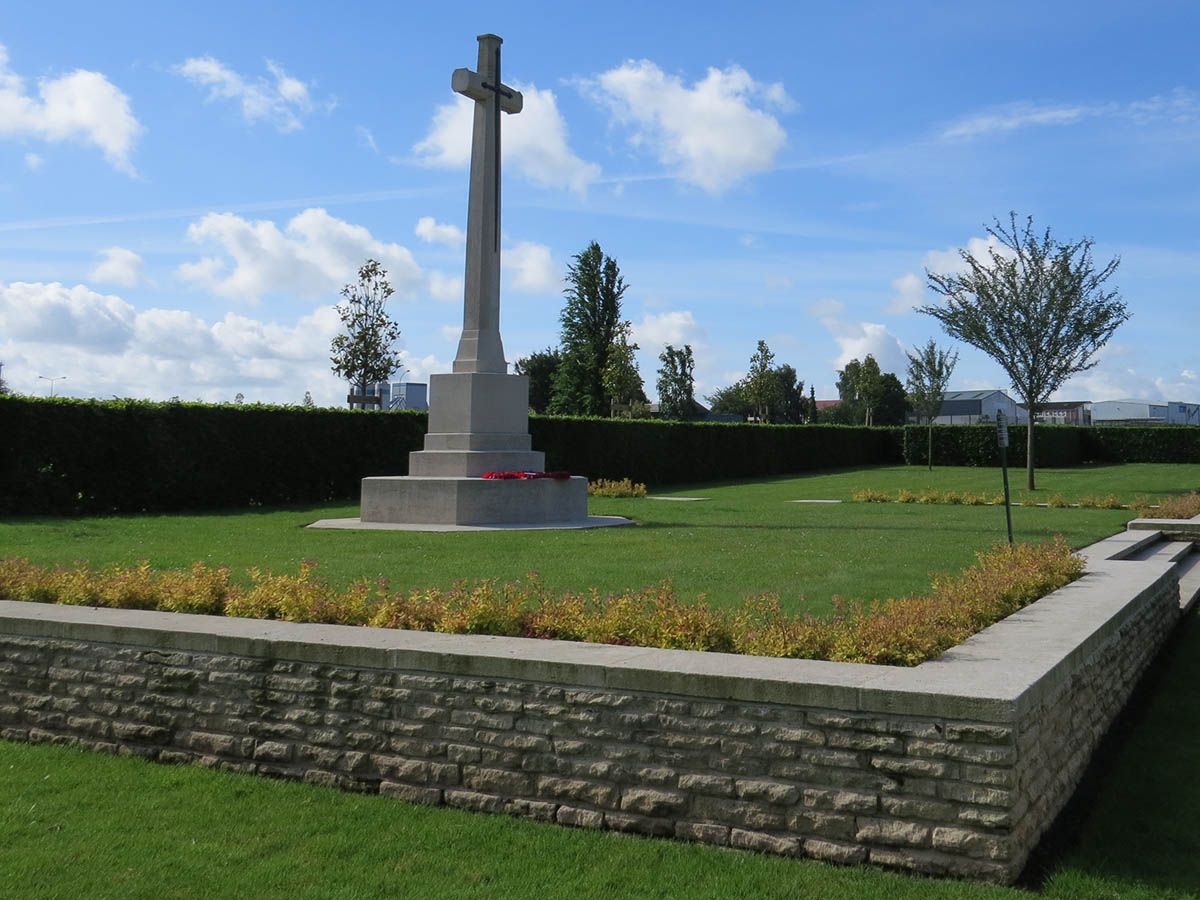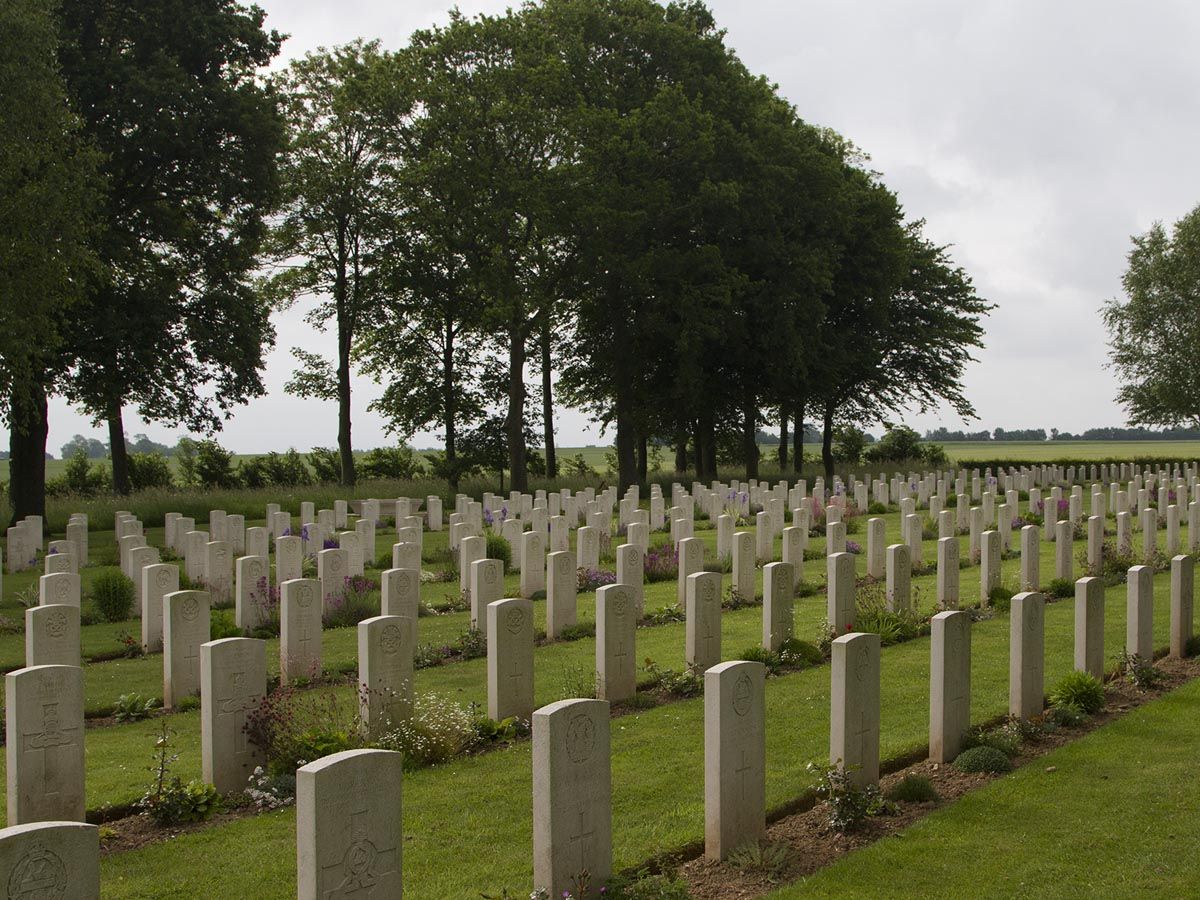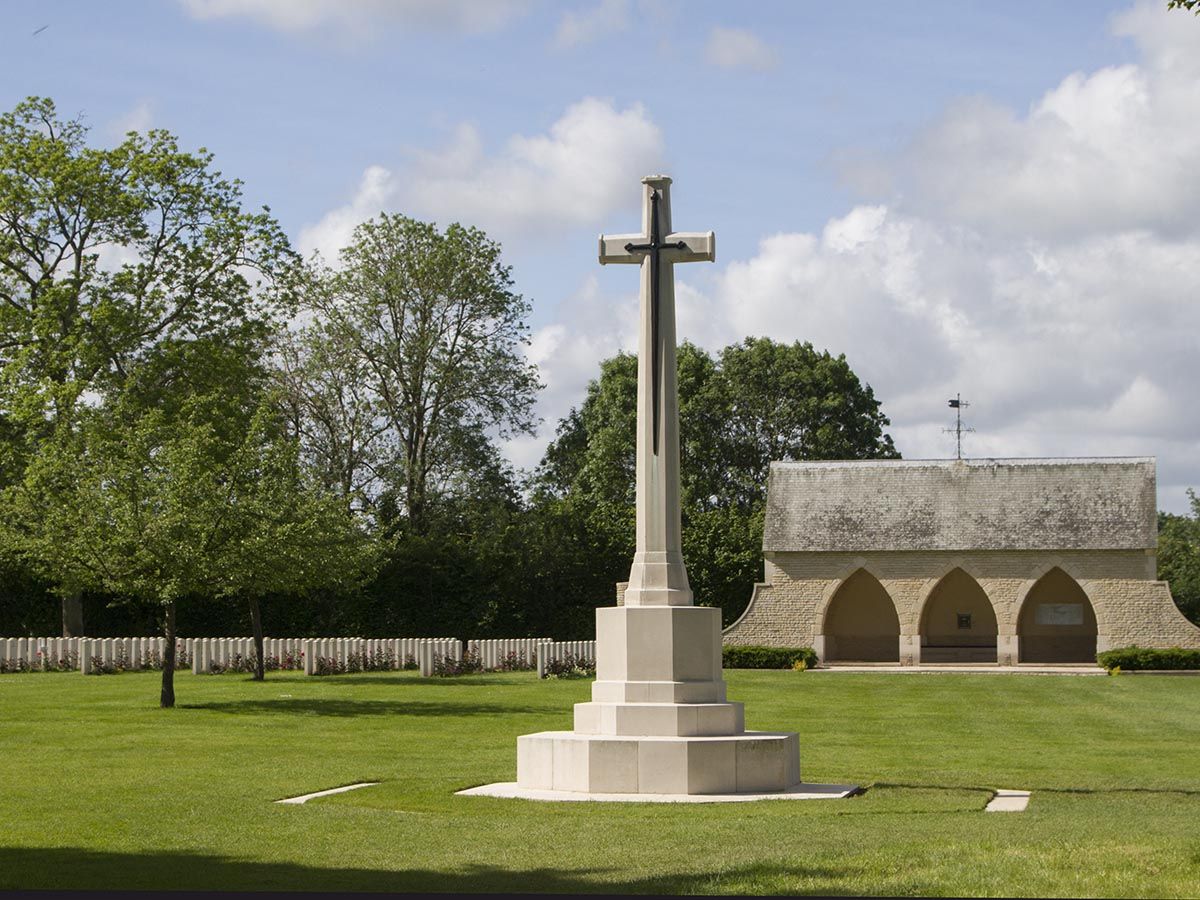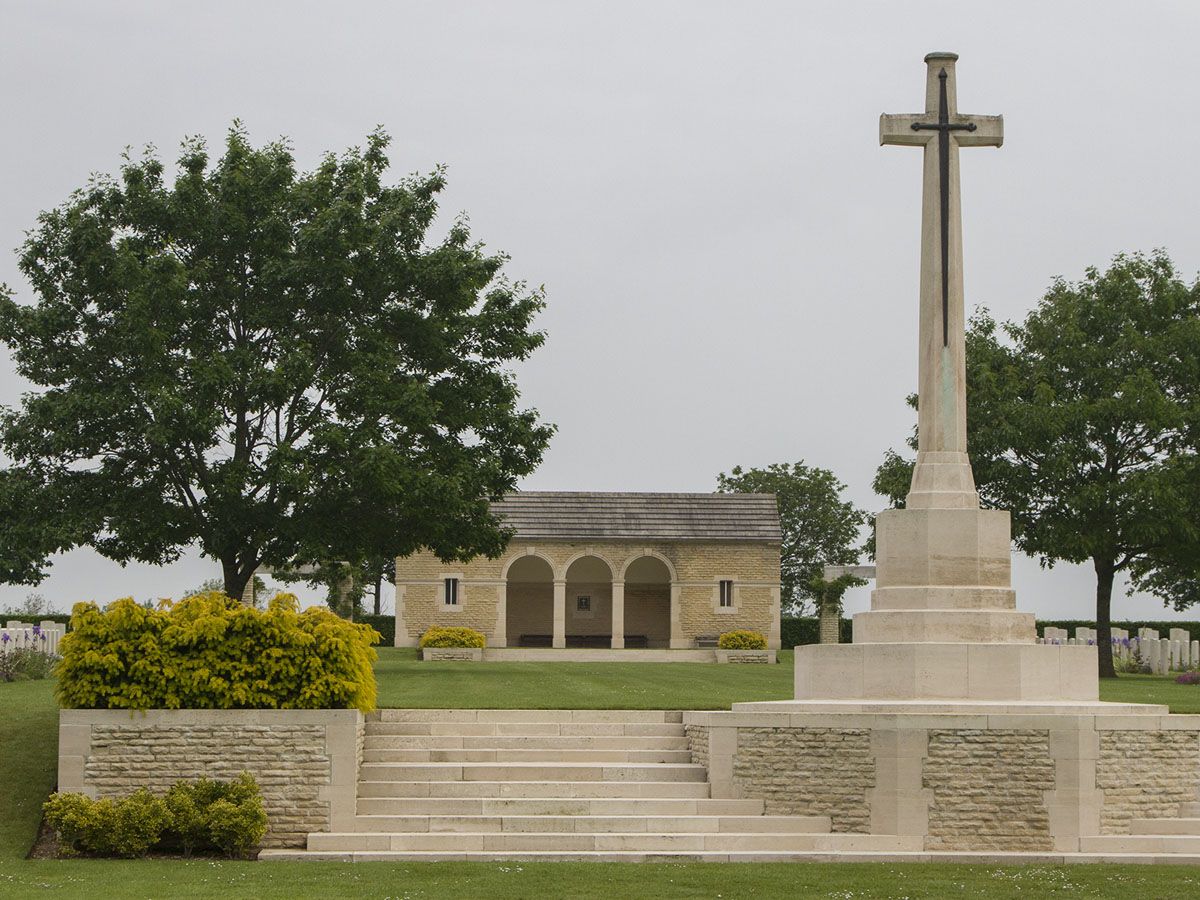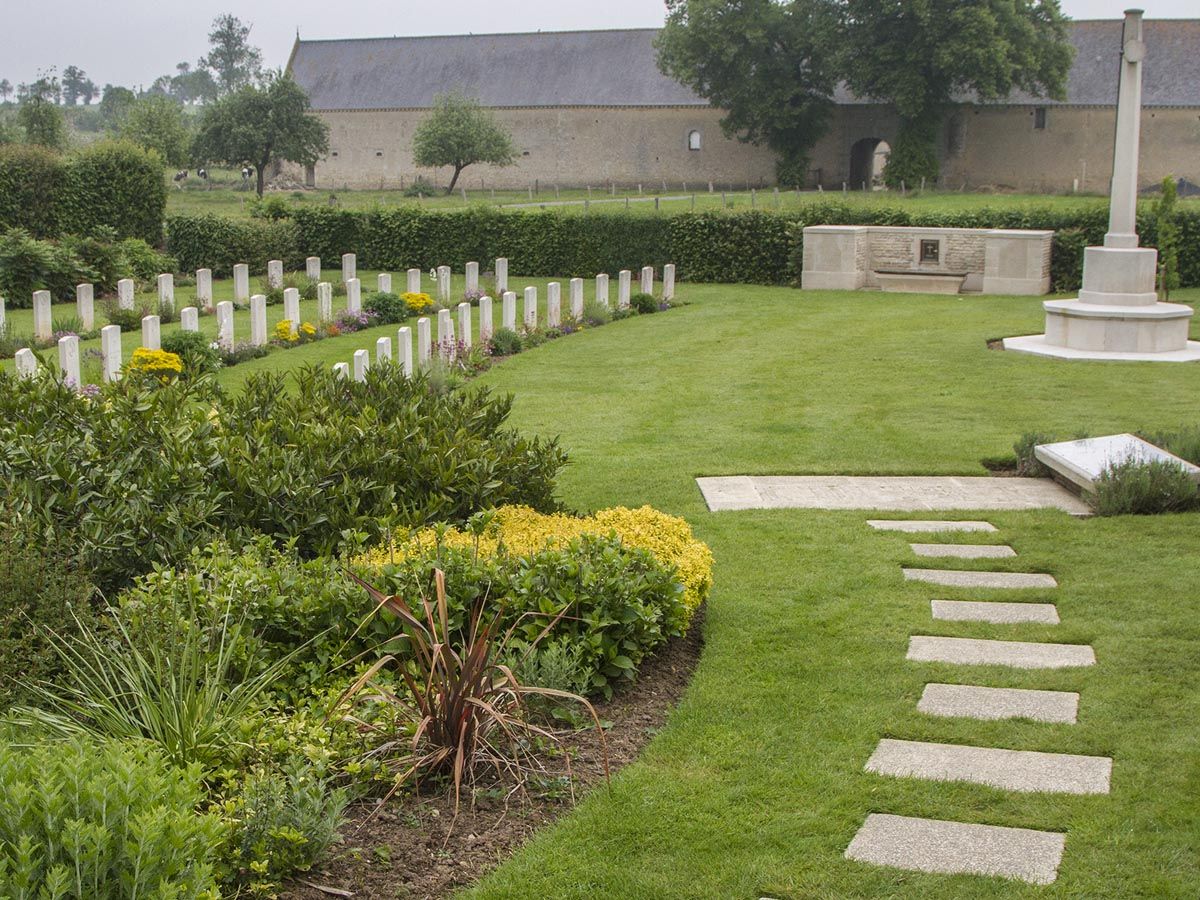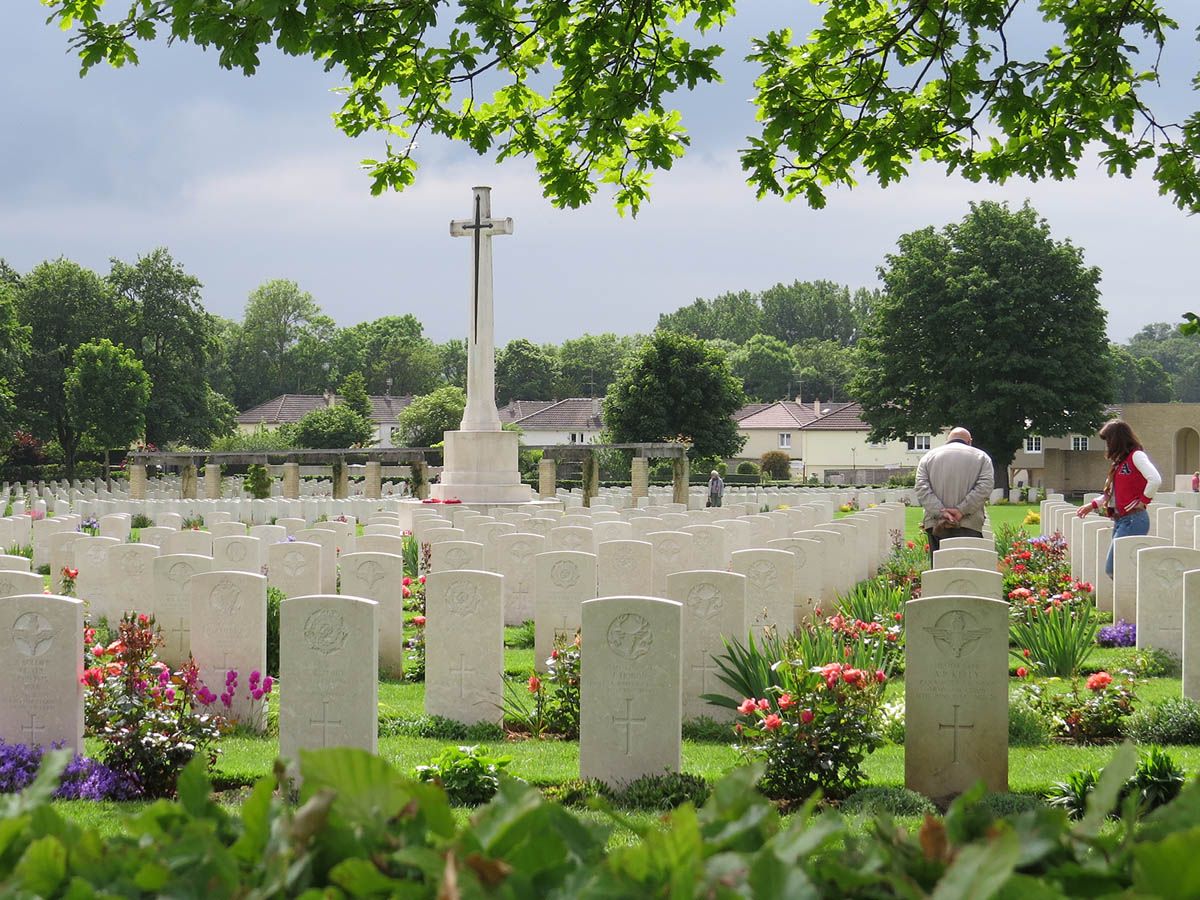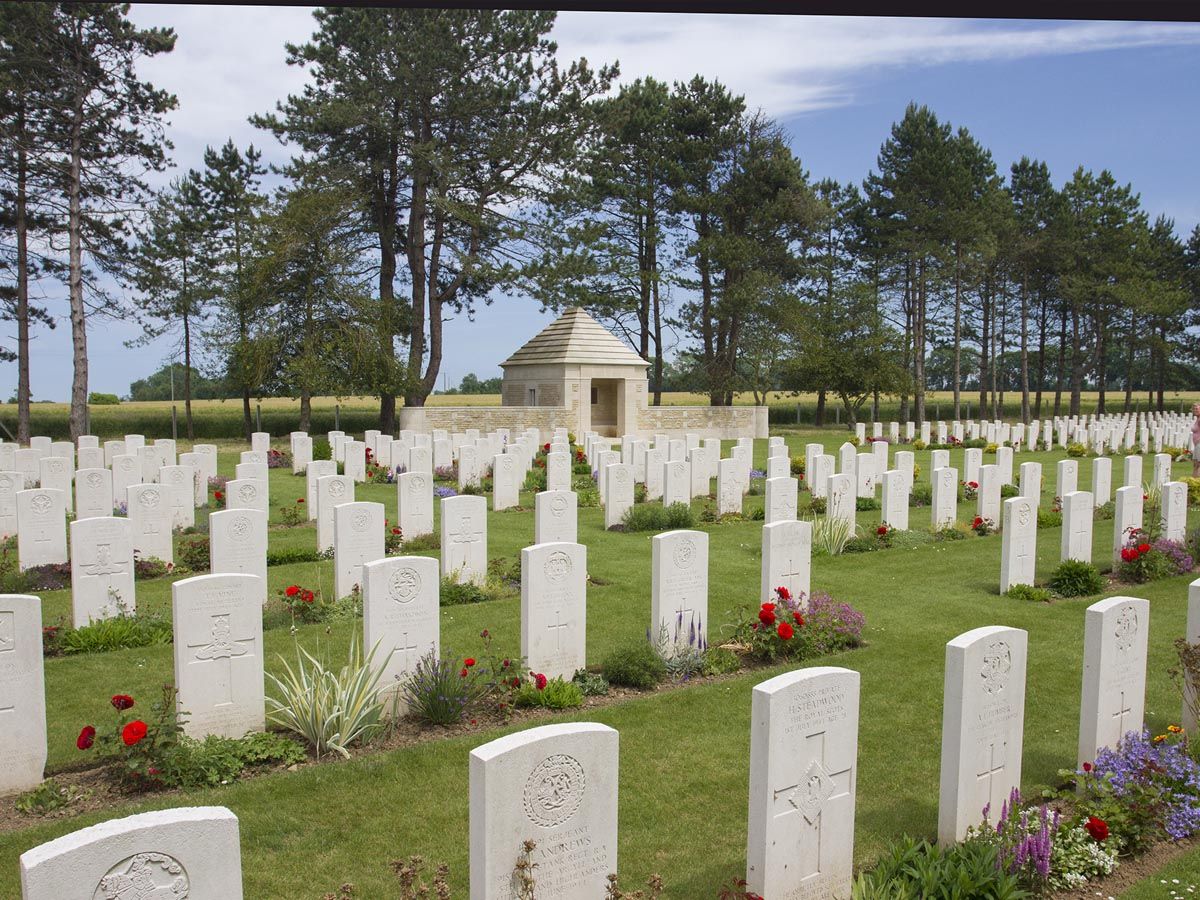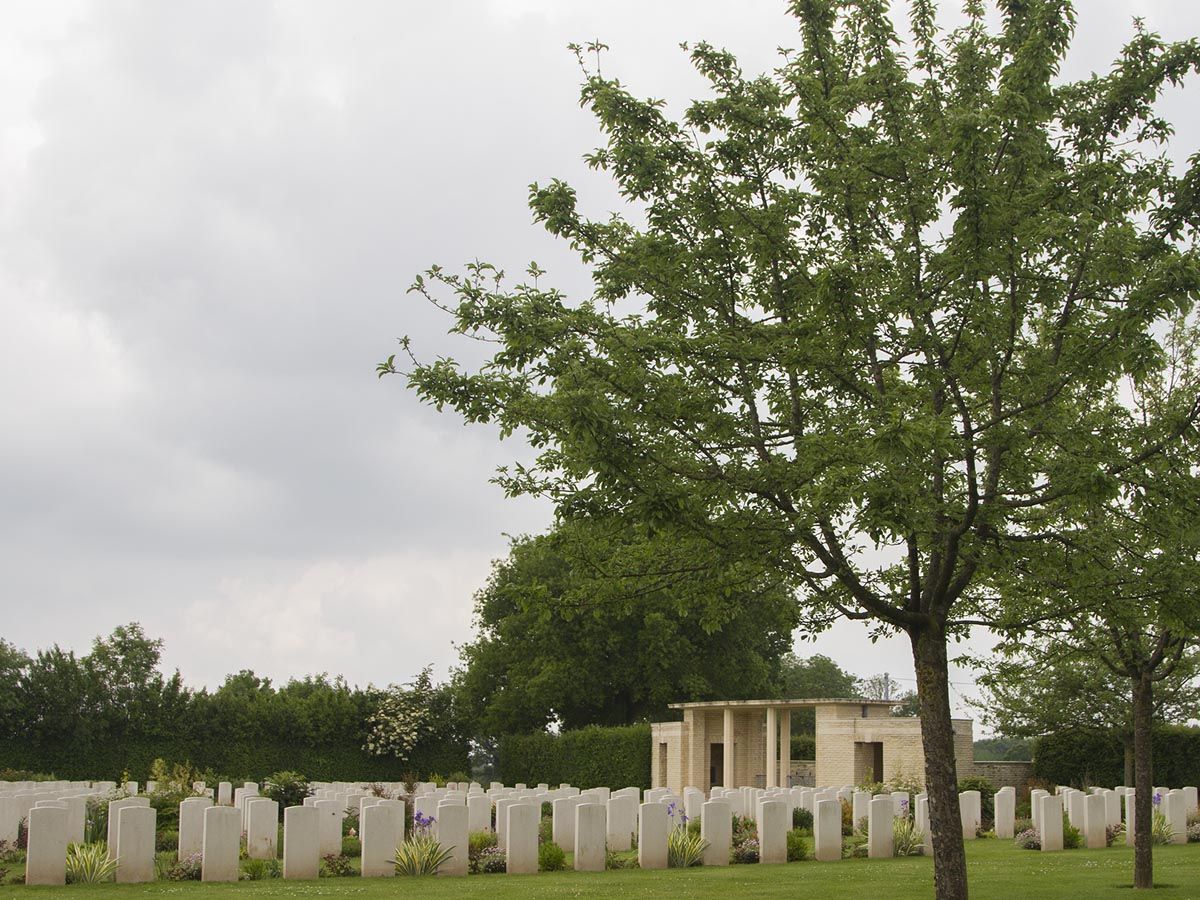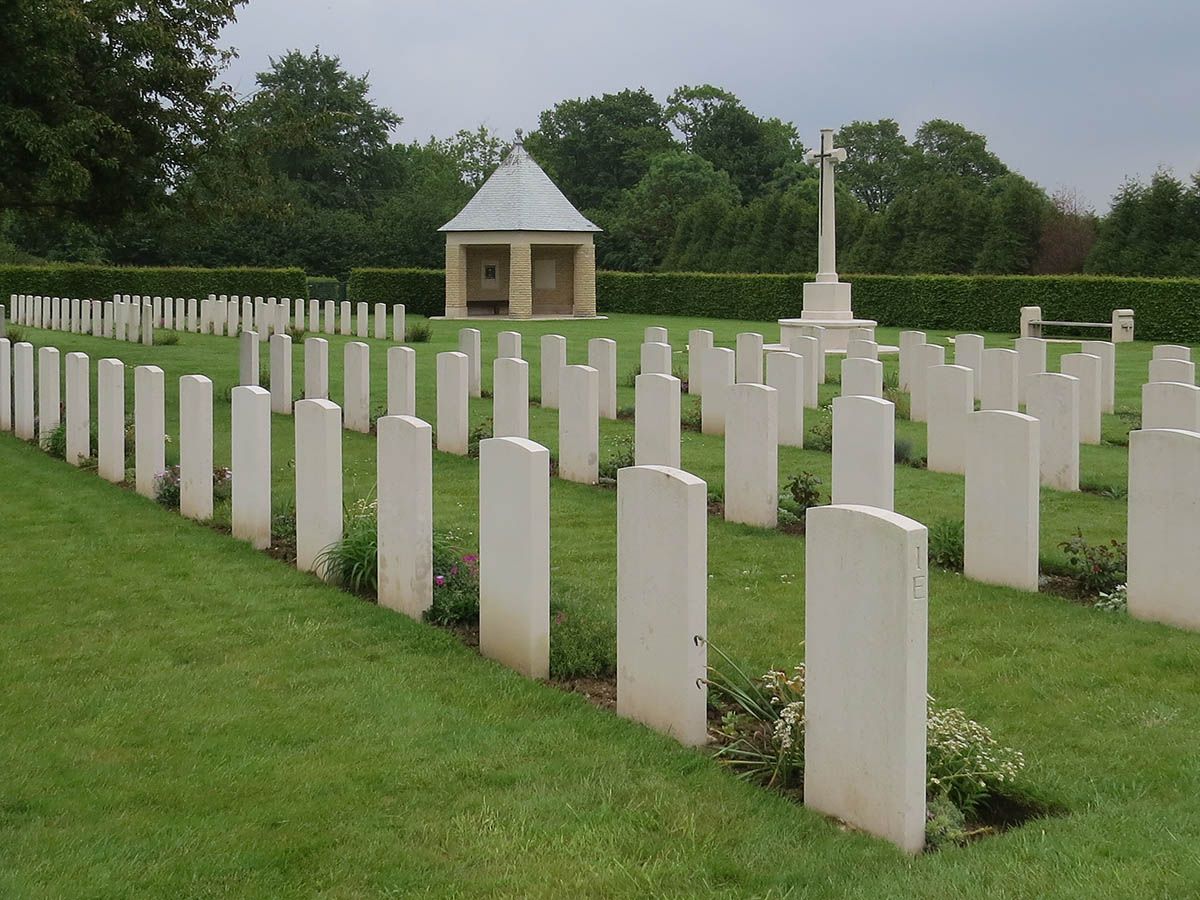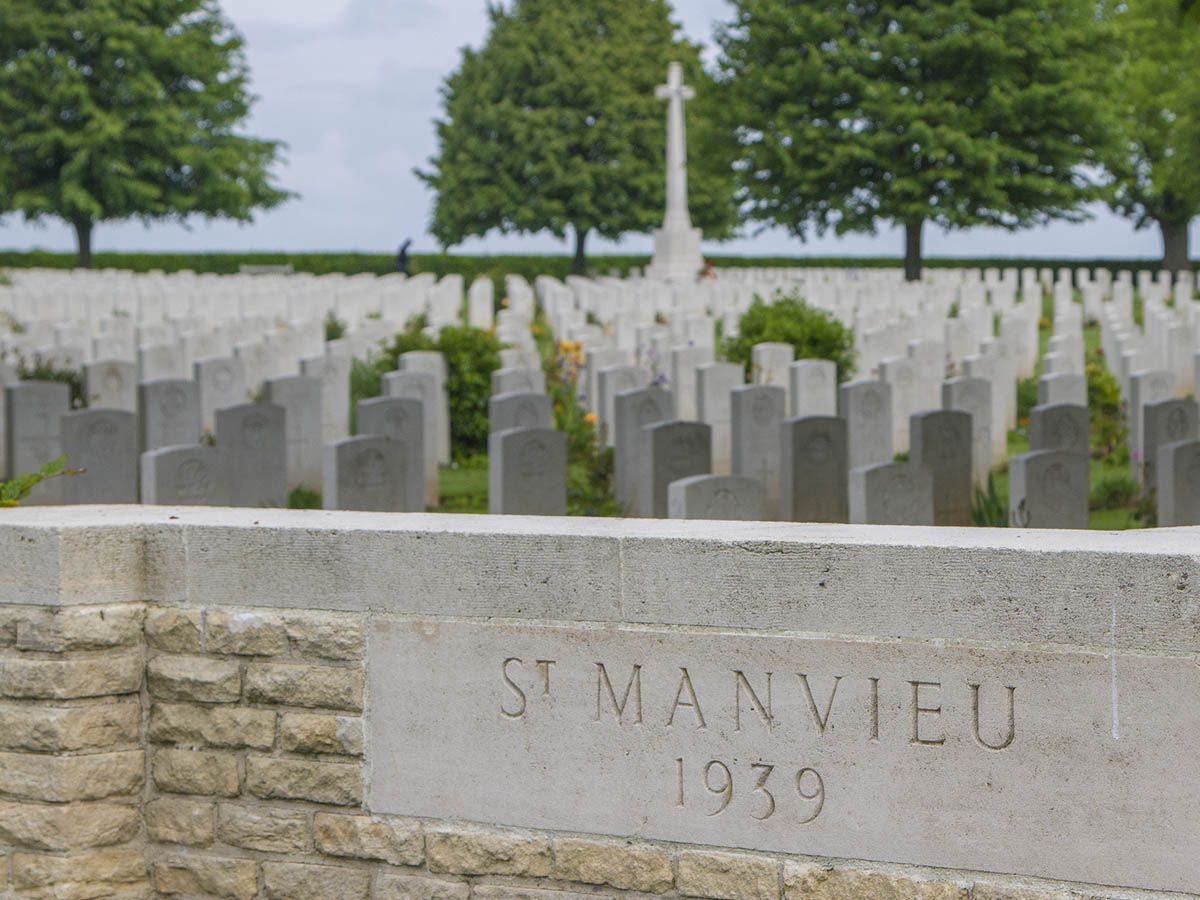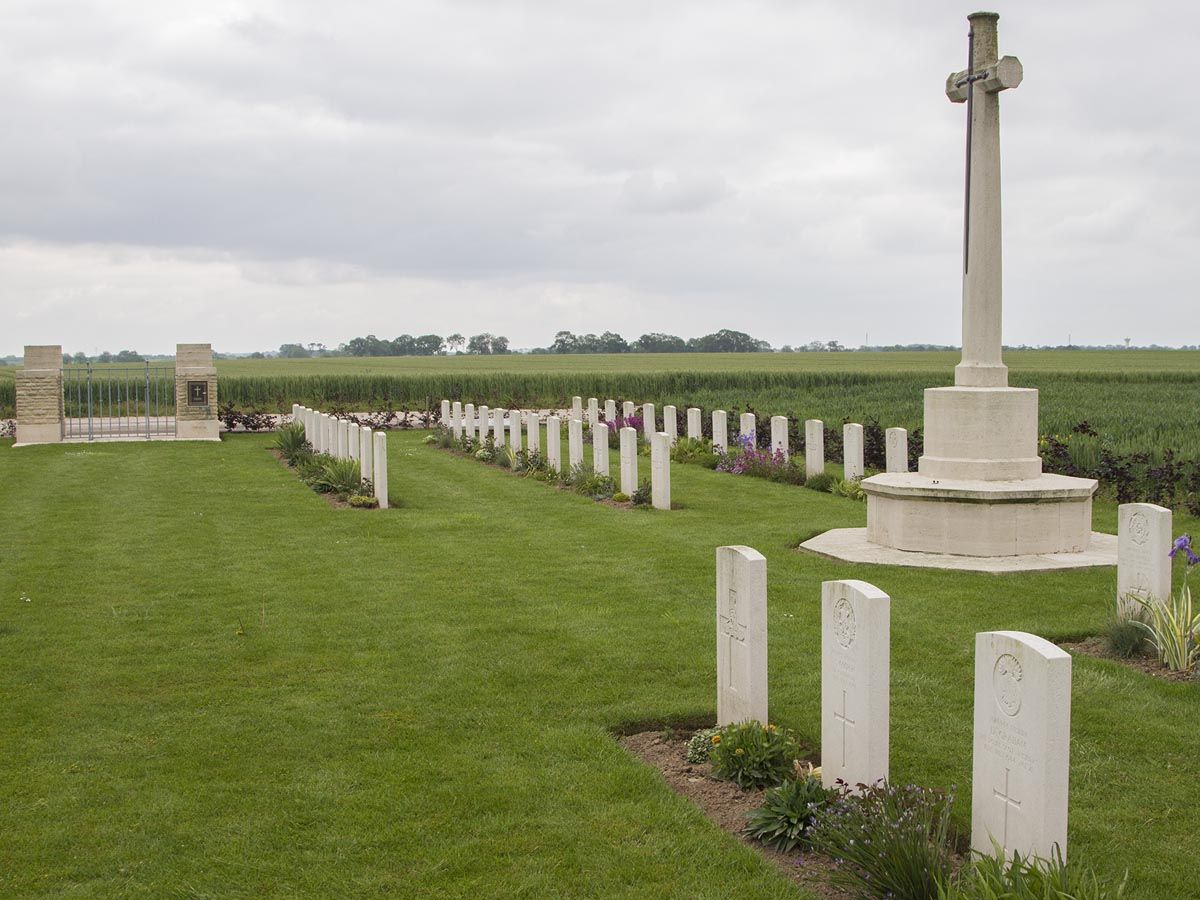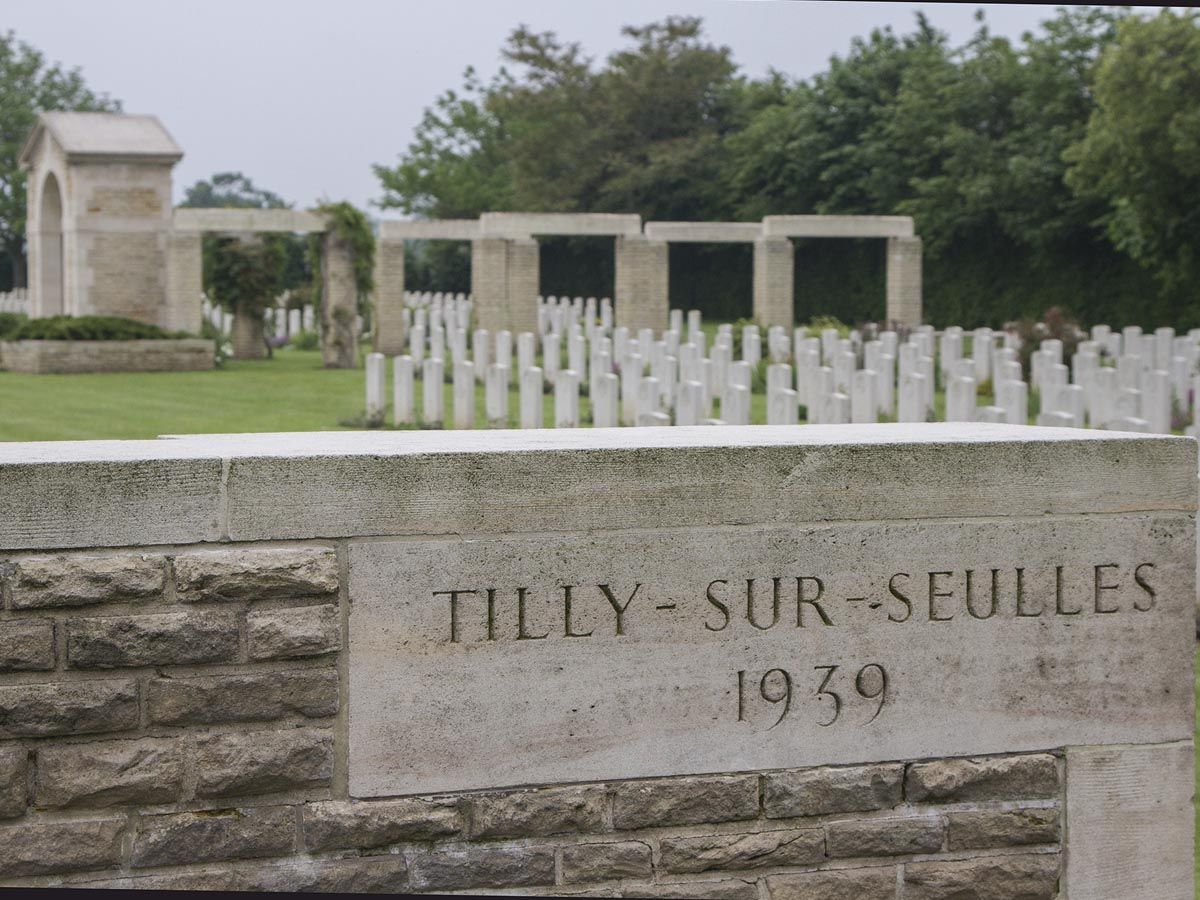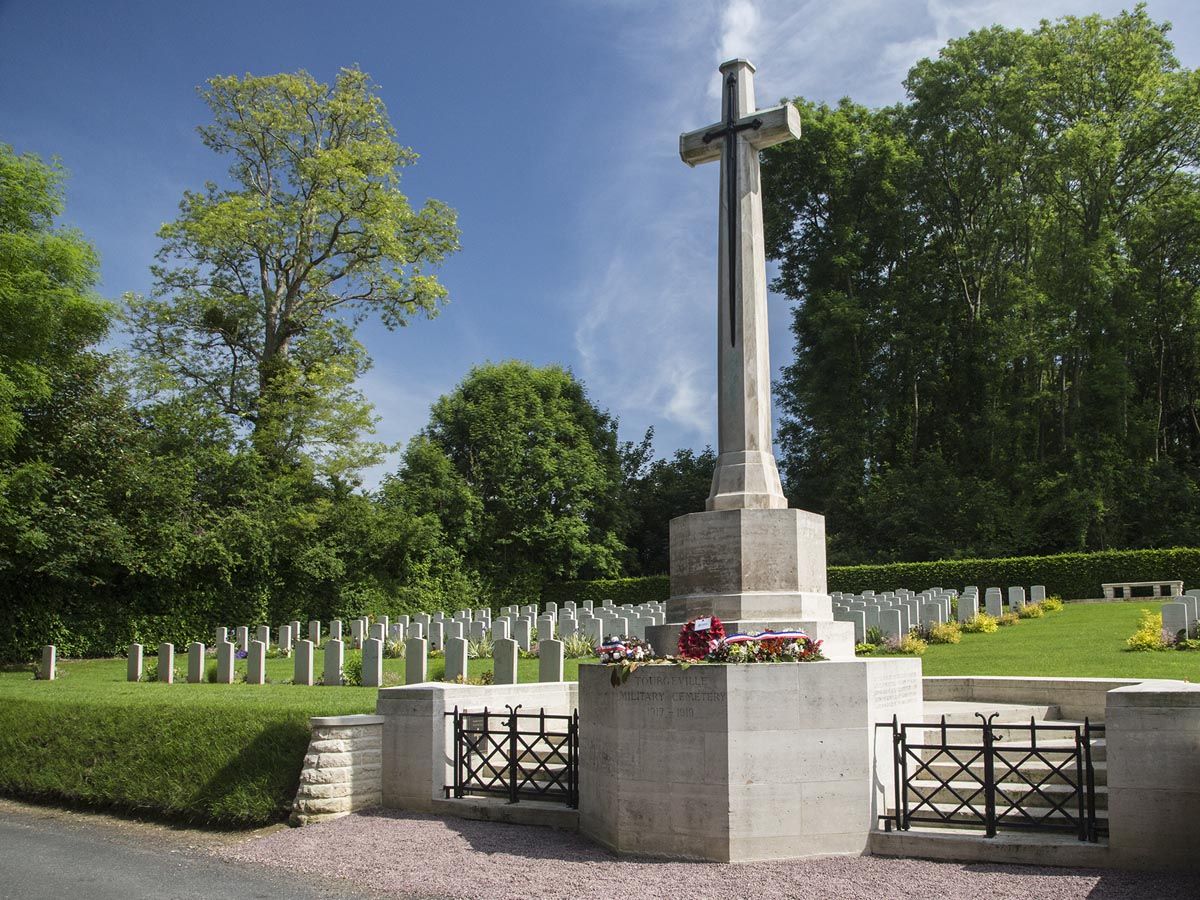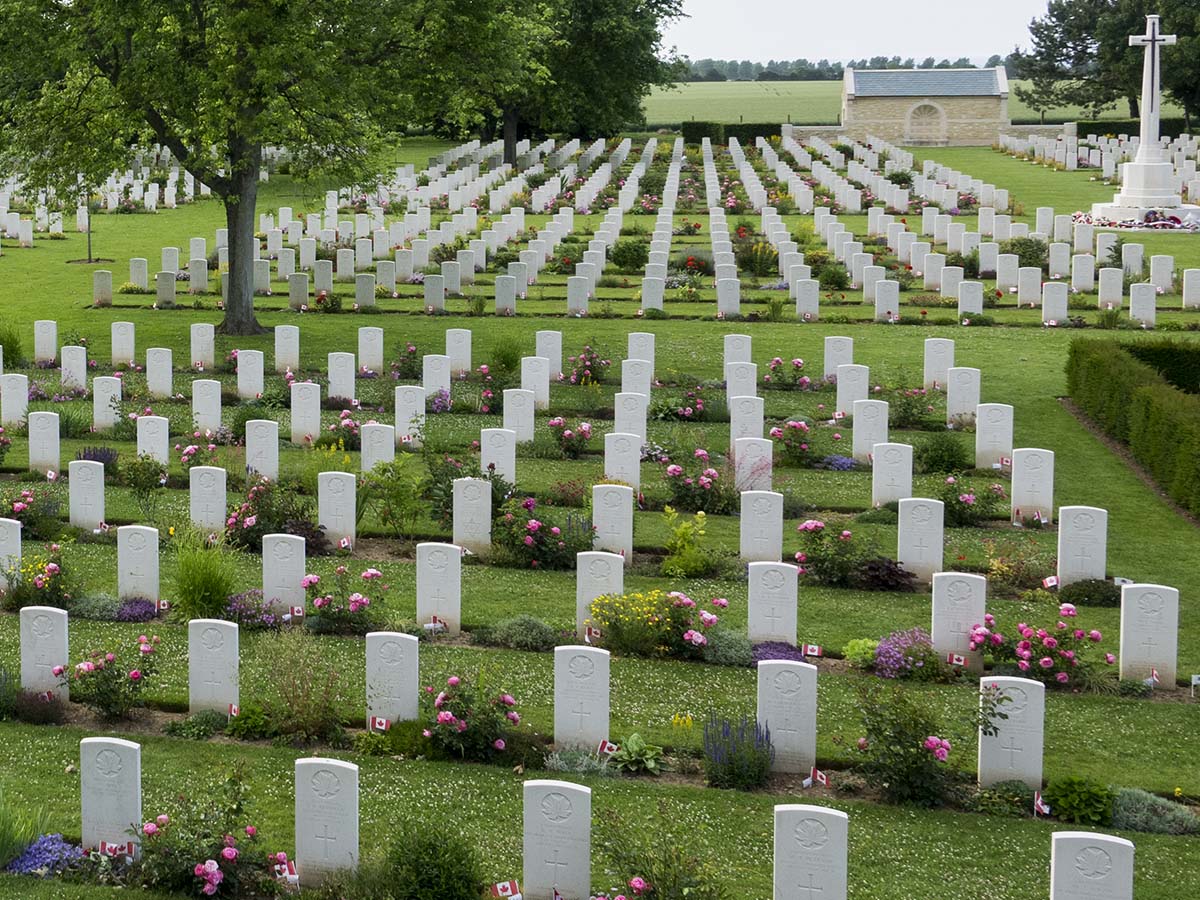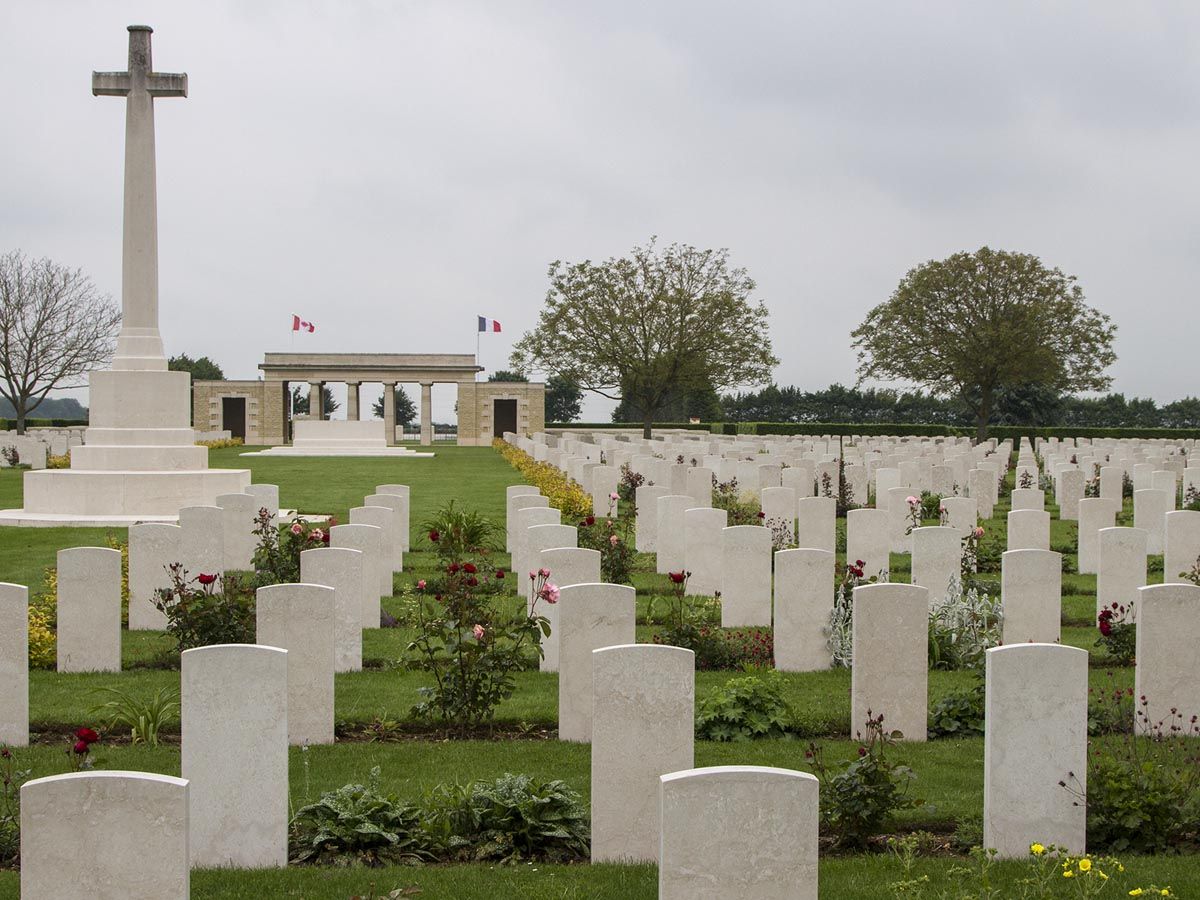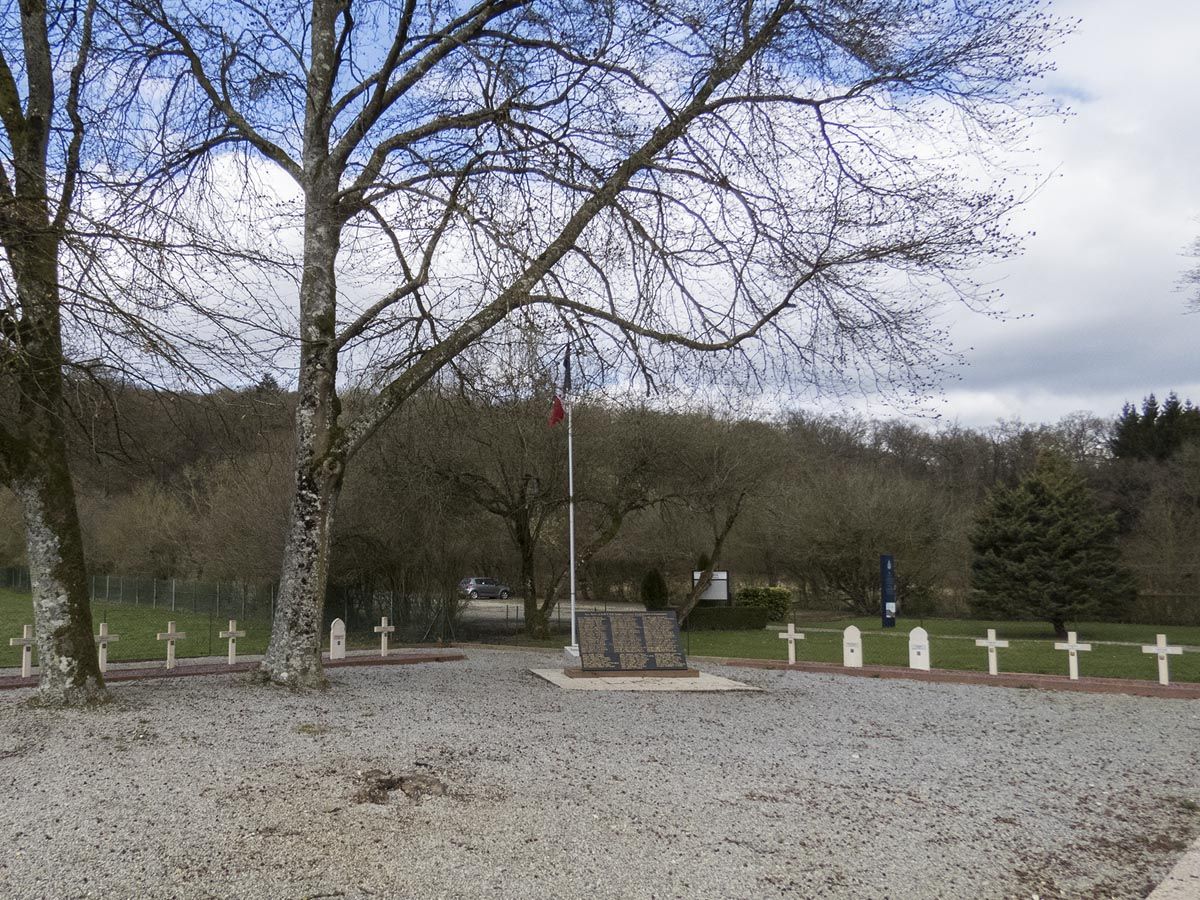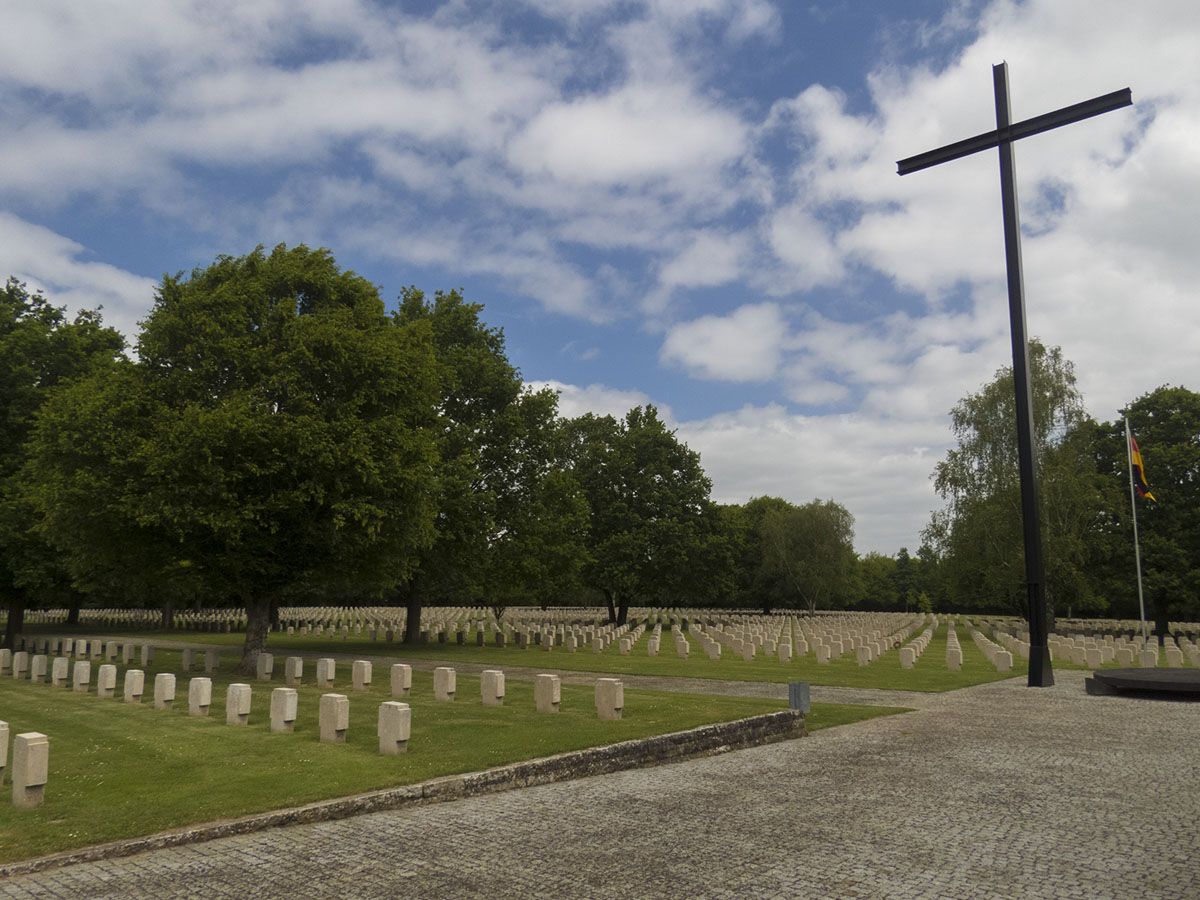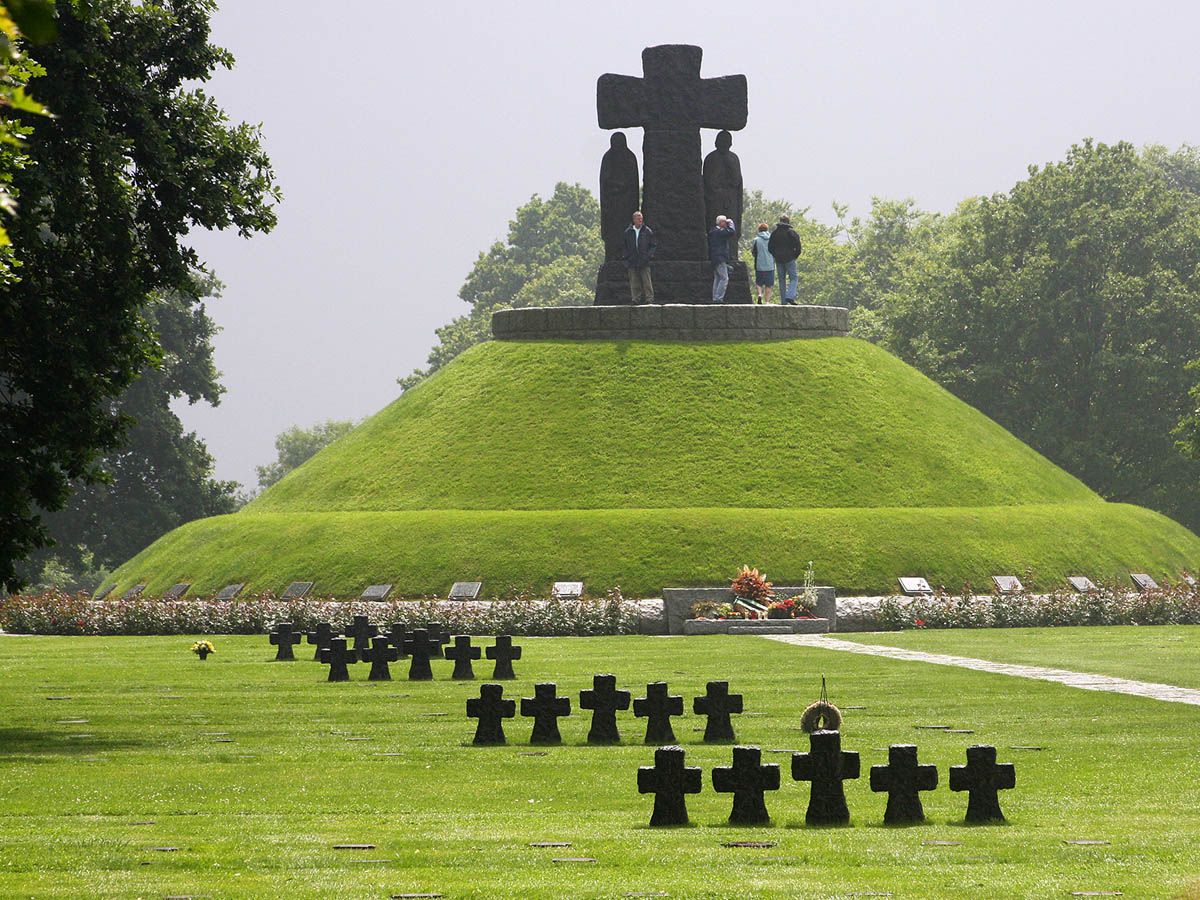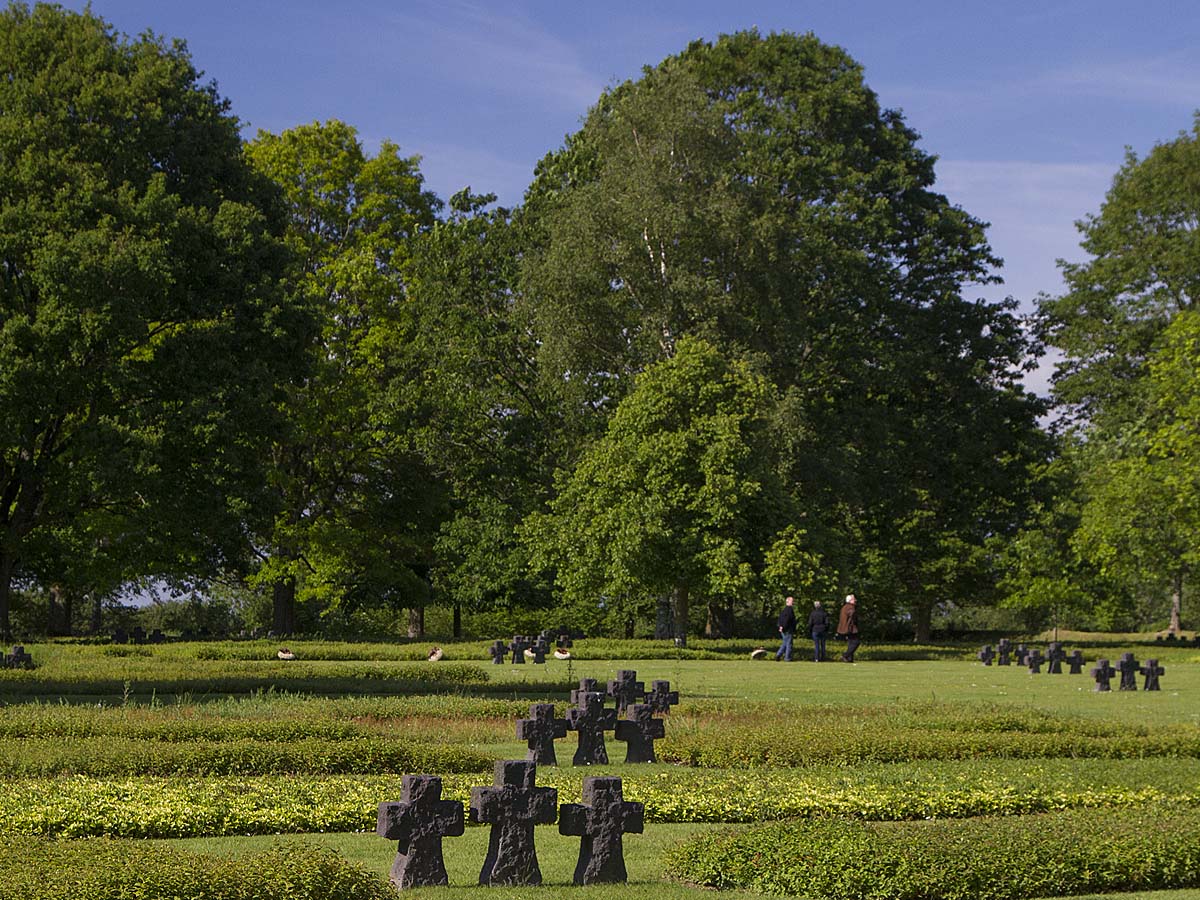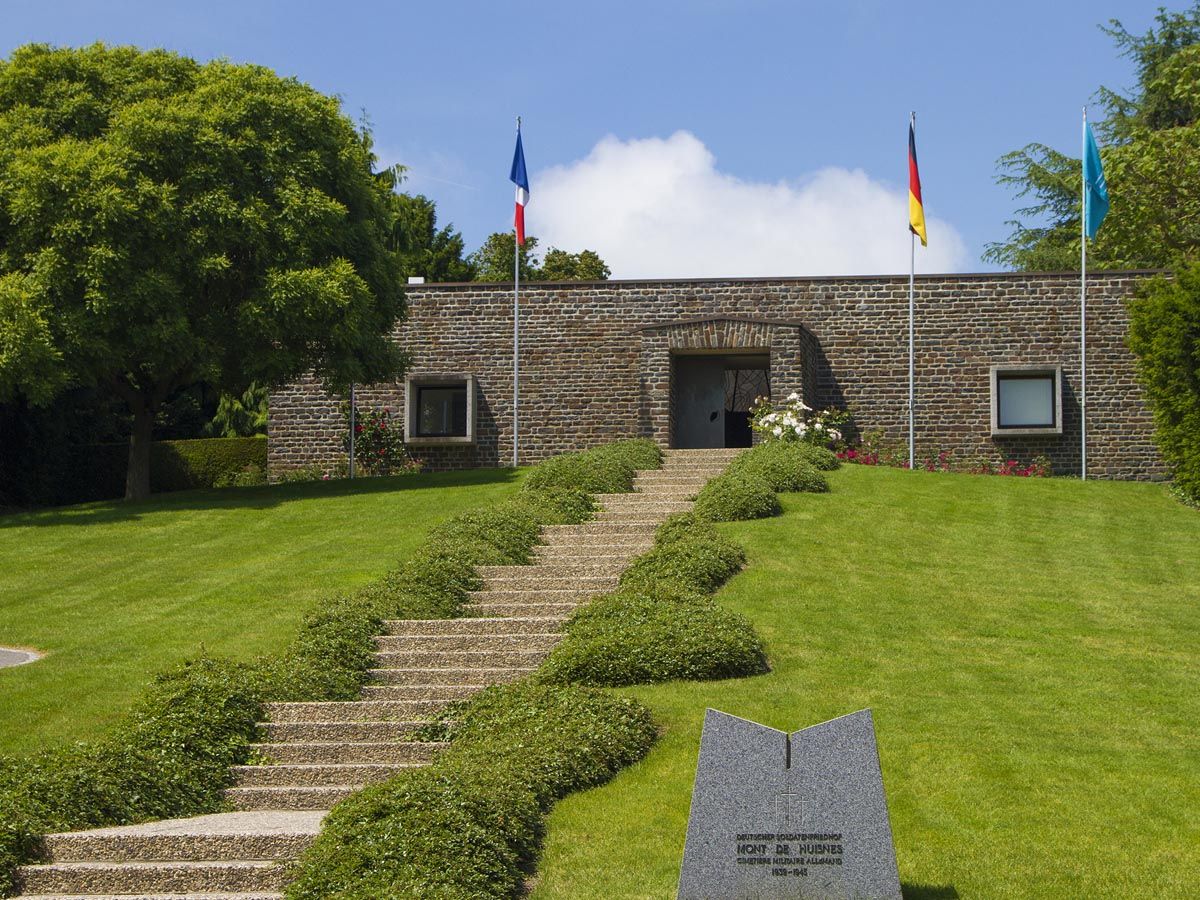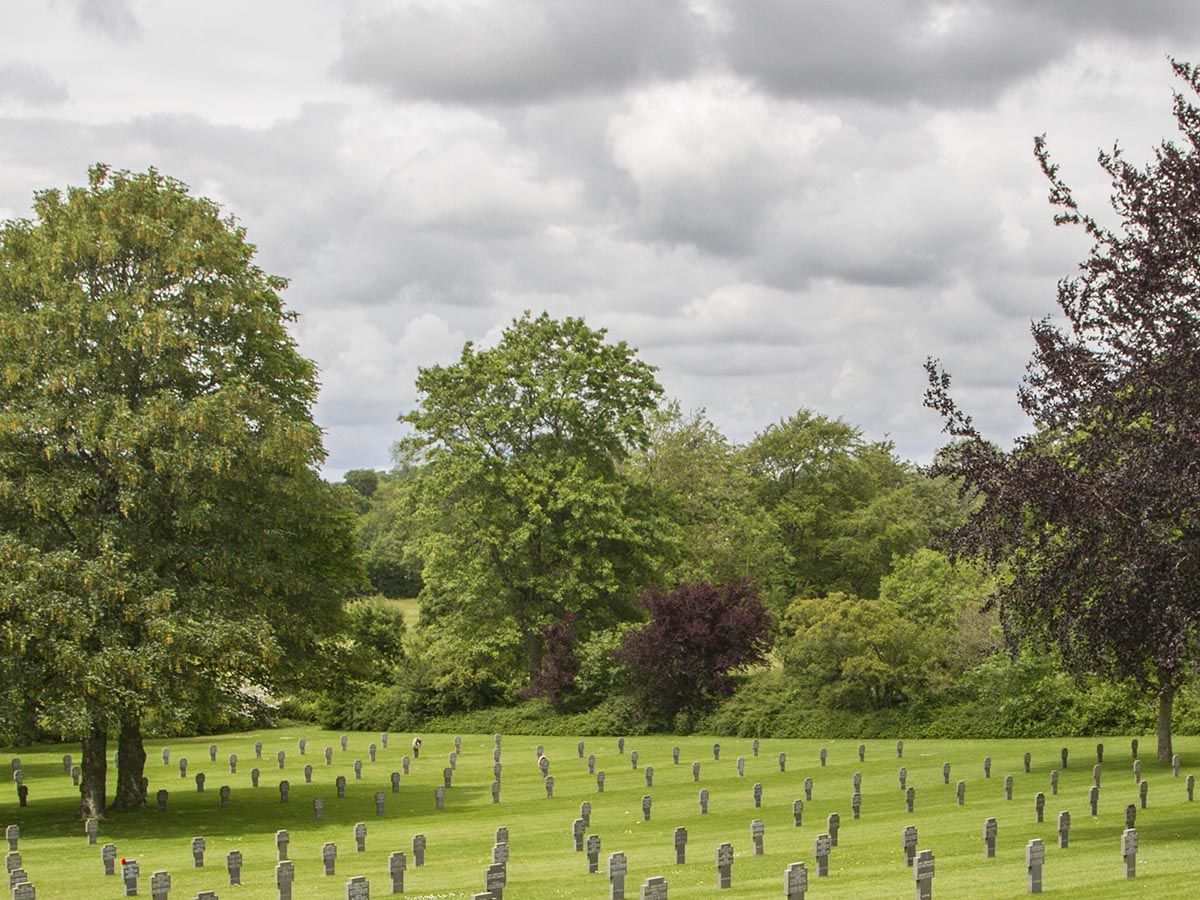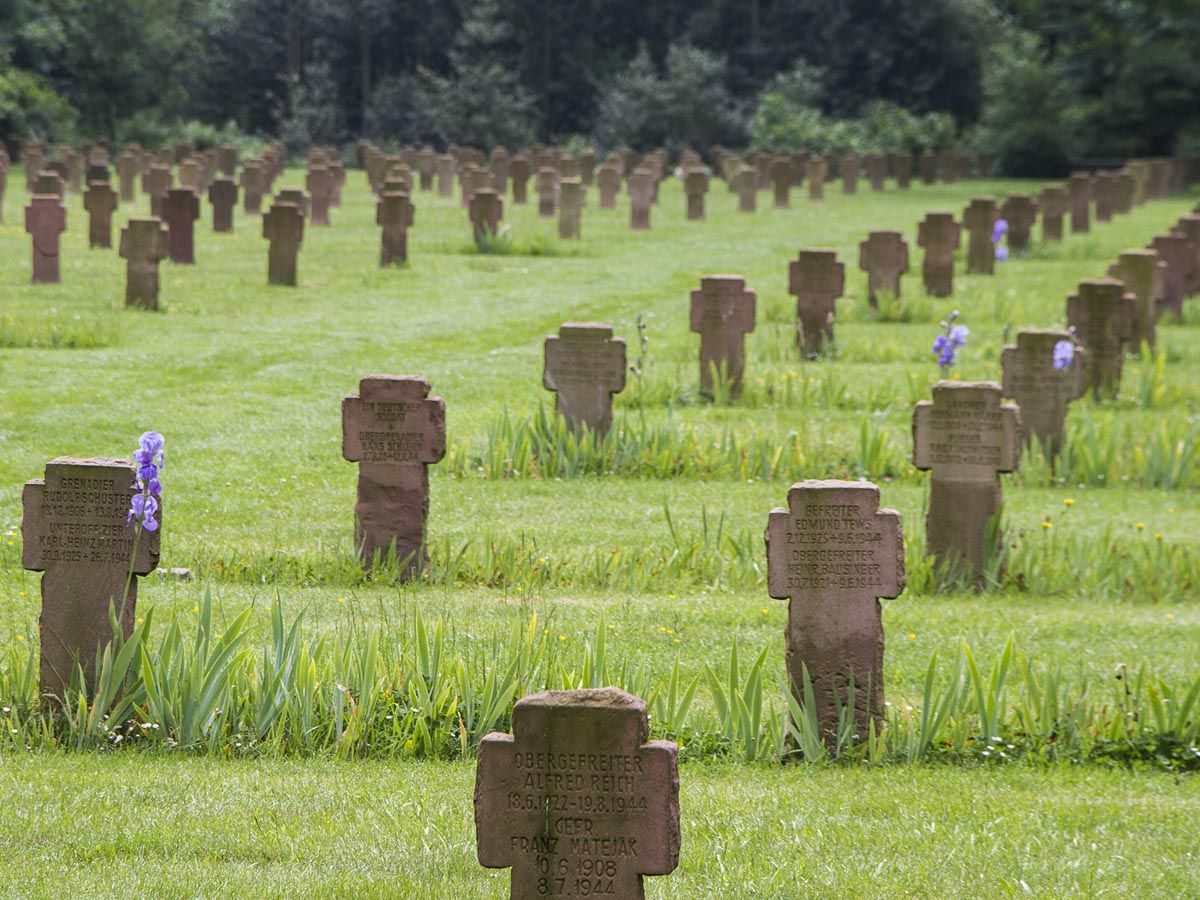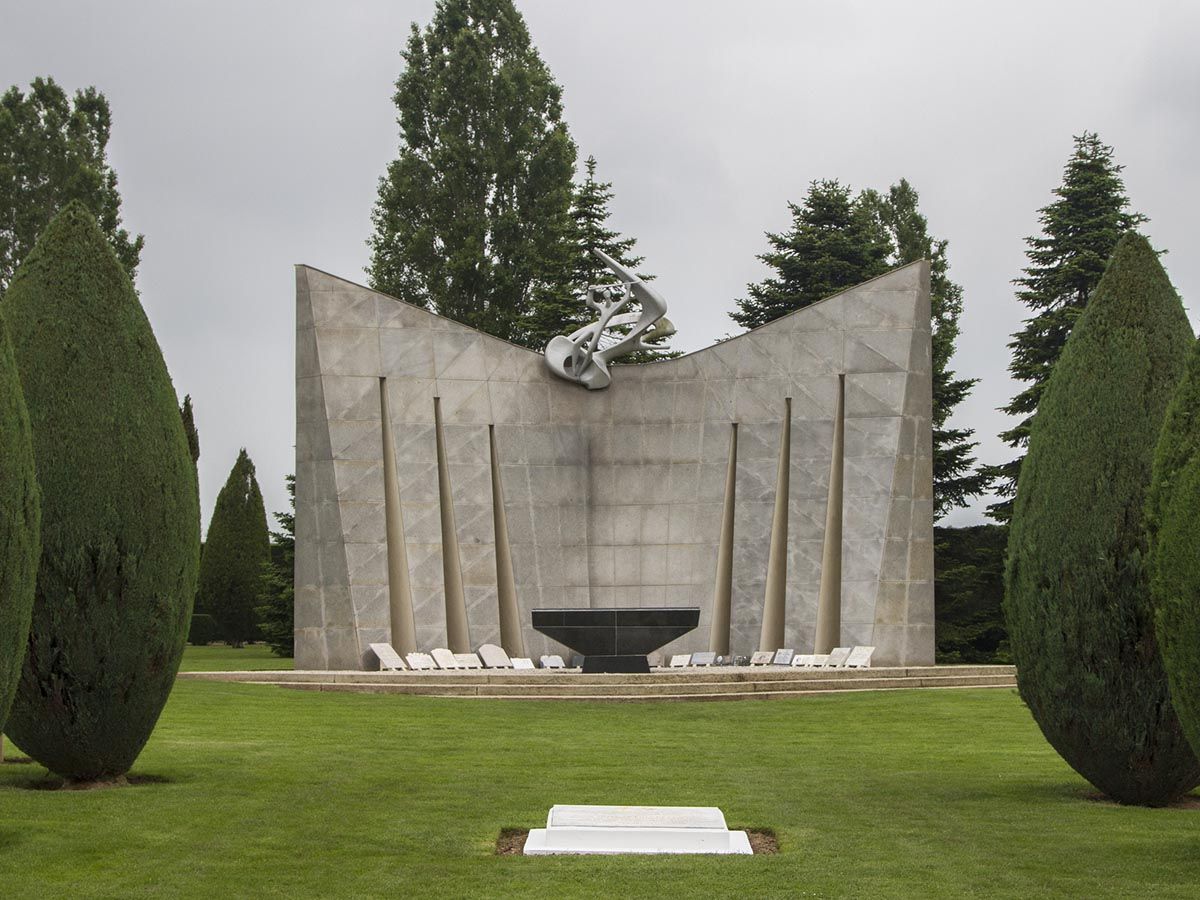Tucked away in the peaceful Normandy countryside, St. Charles de Percy War Cemetery offers visitors a poignant glimpse into World War II history. This intimate memorial site, located about 44 kilometers southwest of Caen, serves as the final resting place for 809 soldiers who gave their lives during the summer of 1944. Unlike the larger, more frequented Normandy cemeteries, St. Charles de Percy provides a quiet, reflective experience where you can honor these brave individuals without the crowds.
Getting to this hidden gem requires some planning as public transportation options are limited. Your best bet is renting a car, hiring a taxi, or joining a private tour. The cemetery sits just off the D290A road, making it accessible by vehicle but somewhat off the beaten path. When you visit, you’ll notice the immaculate grounds and the careful attention given to preserving the memory of those who fell during the late July and early August operations of 1944.
History of St. Charles de Percy War Cemetery
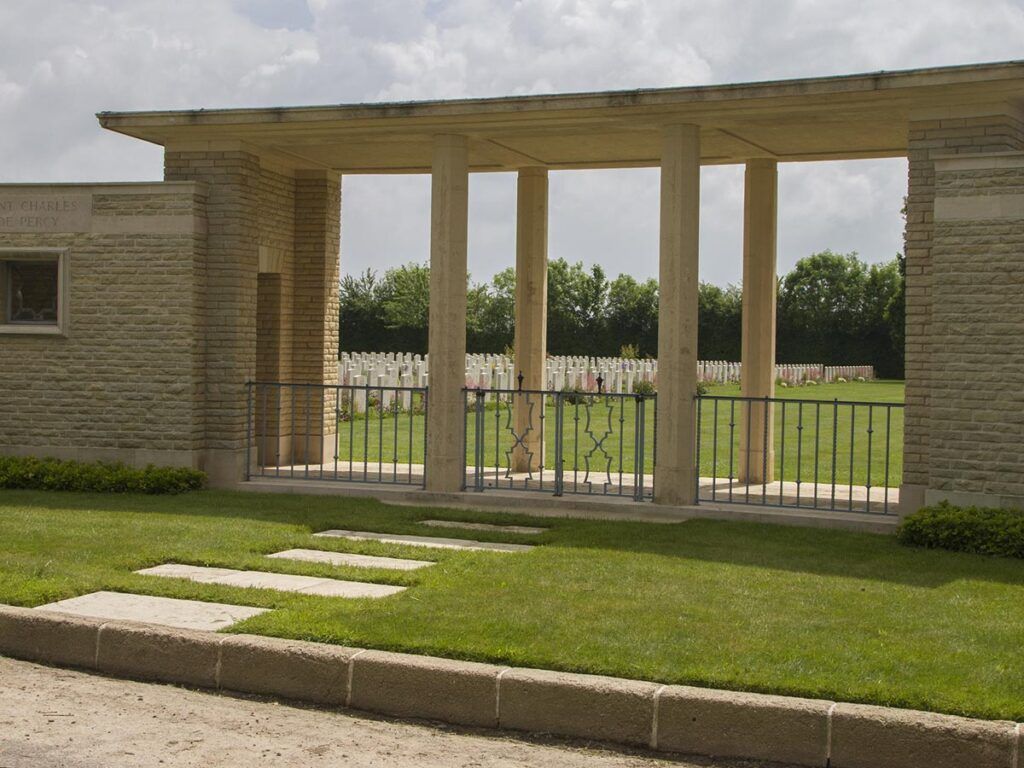
St. Charles de Percy War Cemetery is the southernmost of all the Normandy war cemeteries. When you visit, you’ll be standing on hallowed ground where brave Commonwealth soldiers found their final rest.
The cemetery was established after the intense fighting that took place in this area during the summer of 1944. Most of those buried here lost their lives in late July and early August 1944, during the Allied push through Normandy following the D-Day landings.
Located about 44 kilometers southwest of Caen, this cemetery contains 809 Second World War burials. These graves represent the human cost of the battle to liberate France from German occupation.
Unlike some of the larger, more well-known Normandy cemeteries, St. Charles de Percy offers a more intimate experience. You’ll find it has a quiet dignity that allows for personal reflection on the sacrifices made.
The Commonwealth War Graves Commission maintains this site with the same care and attention as their other cemeteries. The beautifully maintained grounds stand as a lasting tribute to those who never returned home.
When you walk among the rows of headstones, you’re walking through an important piece of World War II history. Each grave tells the story of a life given in service during one of history’s most significant conflicts.
The Cemetery Grounds
St. Charles de Percy War Cemetery offers visitors a solemn yet peaceful place to honor those who fell during the Normandy campaign. The grounds combine thoughtful design with meticulous maintenance, creating a dignified resting place for the brave soldiers.
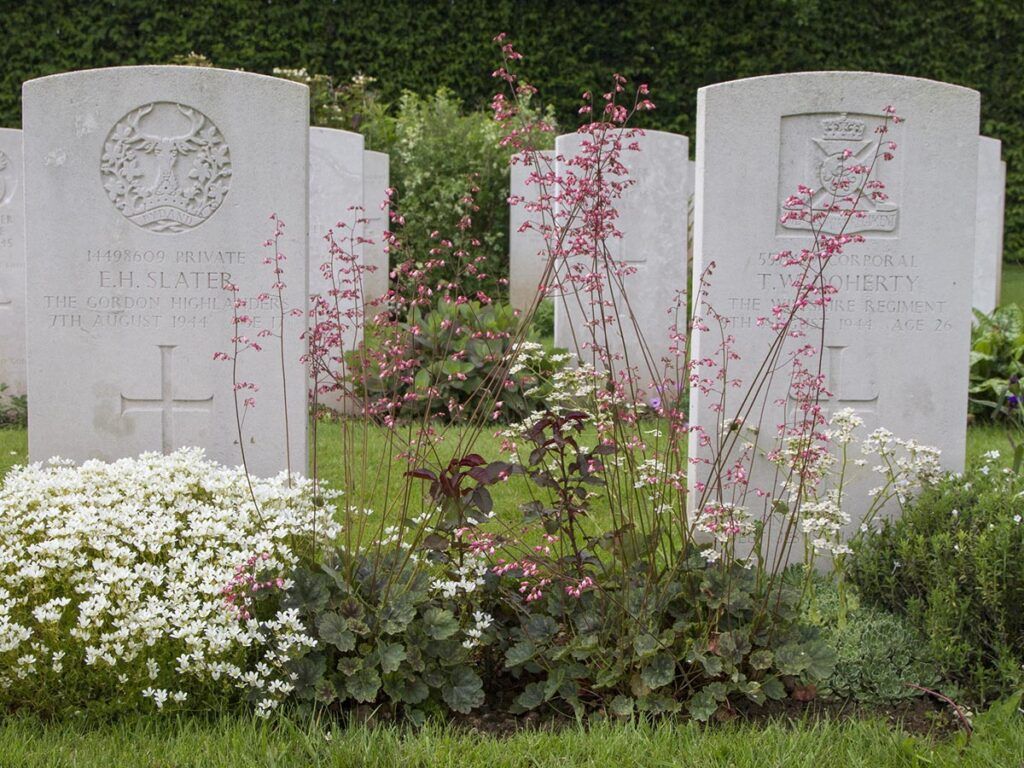
Layout and Design
When you visit this southernmost Normandy cemetery, you’ll notice its intimate and thoughtful design. Unlike larger memorial sites, St. Charles de Percy has a more personal feel. The cemetery contains 809 Commonwealth burials from World War II, arranged in neat rows across well-maintained grounds.
The headstones stand in perfect alignment, creating a powerful visual reminder of sacrifice. Each stone bears the name, rank, unit, date of death, and often a personal inscription chosen by the family.
You’ll find the cemetery located just off the D290A, making it accessible yet peaceful. The layout encourages quiet reflection as you walk among the graves.
Notable Graves
As you explore the grounds, you’ll discover that most of those buried here lost their lives in late July and early August 1944. This timing corresponds with Operation Bluecoat, when British and Canadian forces pushed south through Normandy.
The majority are identified casualties, with each headstone telling its own story. The Commonwealth War Graves Commission has ensured that each fallen soldier receives proper recognition.
Take time to read some of the personal inscriptions. These touching messages from families provide glimpses into the lives behind the names.
The Roll of Honour at the cemetery entrance lists all who rest here, representing multiple Commonwealth nations who fought together.
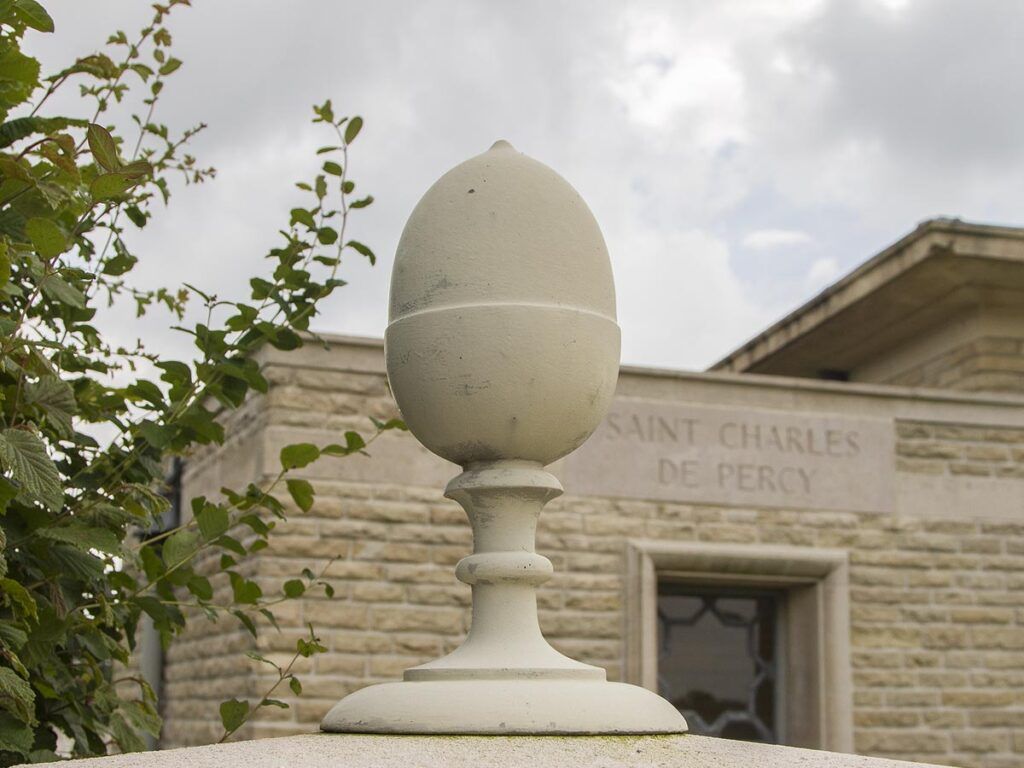
Maintenance
The impeccable condition of St. Charles de Percy speaks to the ongoing commitment of the Commonwealth War Graves Commission. You’ll notice the perfectly manicured lawns and carefully tended flower beds that frame the site.
Year-round maintenance ensures the cemetery remains a fitting tribute to those who made the ultimate sacrifice. Groundskeepers from the local Calvados region work diligently to preserve the dignity of this final resting place.
The Commission’s dedicated care allows visitors like you to experience the cemetery as it was intended – a place of beauty, peace, and remembrance. Their work ensures that even as decades pass, the memory of these soldiers endures.
Honoring the Fallen
St. Charles de Percy War Cemetery offers several meaningful ways for visitors to pay respects to the 809 soldiers who made the ultimate sacrifice during the Normandy campaign. The cemetery’s intimate setting creates a powerful atmosphere for reflection and remembrance.
Ceremonies and Events
The cemetery hosts several commemorative events throughout the year, with the most significant ceremonies held around D-Day anniversary (June 6th) and VE Day (May 8th). Local schoolchildren often participate, placing flowers on graves and learning about the sacrifice of these young soldiers.
You’ll find that Remembrance Sunday (second Sunday in November) features a solemn ceremony with veterans’ groups and military representatives laying wreaths at the Cross of Sacrifice.
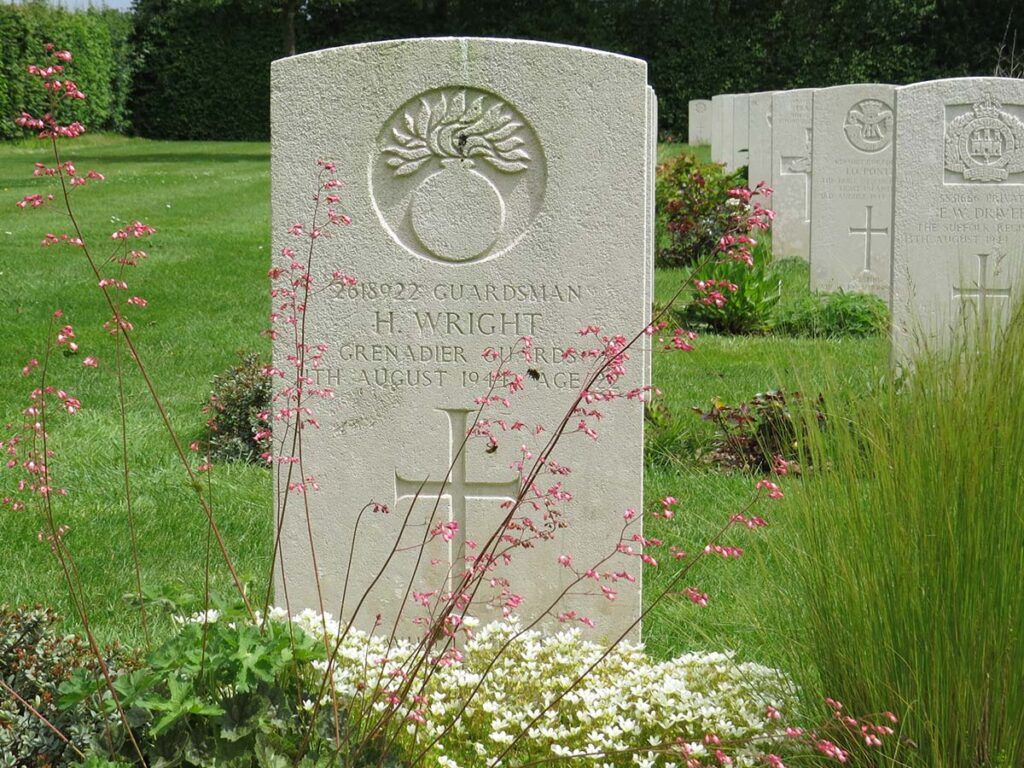
The Royal British Legion organizes periodic visits, especially during summer months. If you’re lucky enough to attend one of these events, you’ll experience moving tributes including bugle calls, readings, and moments of silence.
Tip: Check with the Commonwealth War Graves Commission website before your visit to confirm upcoming ceremonies.
Personal Tributes
Many visitors leave personal items at St. Charles de Percy. You’ll notice photographs, handwritten notes, and small national flags placed thoughtfully beside headstones.
The cemetery provides a visitor book where you can share your reflections. These comments become part of the memorial’s ongoing history and provide comfort to families who can’t visit in person.
Bringing flowers is welcome—the cemetery staff maintain a water source near the entrance for this purpose. Consider following the British tradition of placing a single poppy as a simple yet powerful gesture.
Photography is permitted throughout the grounds, but remember this is a place of quiet reflection. Many visitors photograph individual headstones to document the memory of specific soldiers, especially those from their hometown or regiment.
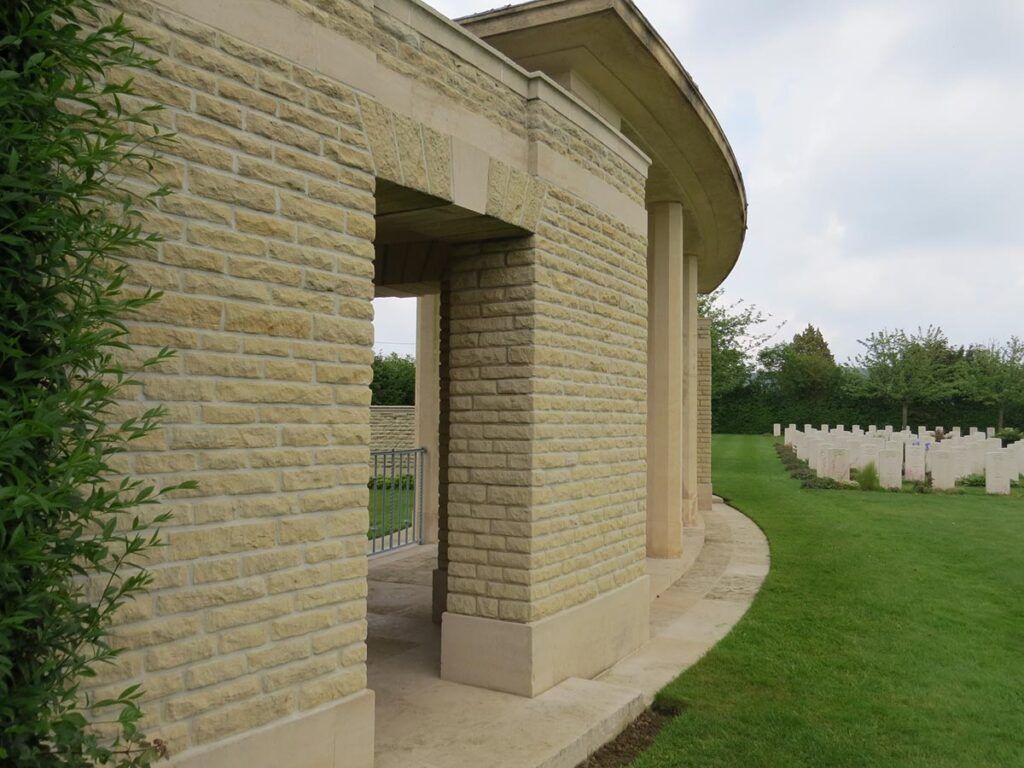
Planning Your Visit
Visiting the St. Charles de Percy War Cemetery offers a moving and intimate experience compared to larger Normandy memorials. This tranquil site, located 44 kilometers southwest of Caen, requires some planning to make your trip meaningful and convenient.
Best Time to Visit
The cemetery is accessible year-round, but the most pleasant weather occurs from May through September. Summer months (June-August) offer warm temperatures and longer daylight hours for exploring the grounds thoroughly.
Spring (April-May) brings beautiful flowering landscapes that add poignancy to your visit. The anniversary of the Normandy Campaign in early June sees more visitors paying respects.
Fall visits (September-October) offer fewer crowds and mild weather. Winter months can be cold and rainy, but provide a solemn, reflective atmosphere with very few tourists.
Consider visiting early morning or late afternoon for the most peaceful experience, especially during summer when tour groups are more common.
How to Get There
St. Charles de Percy War Cemetery is located on the D290A road, just off the main route through the Normandy countryside. From Caen, it’s approximately a 45-minute drive southwest.
By car: This is the most convenient option. Follow signs toward Vire, then to Saint-Charles-de-Percy. Use GPS coordinates (48.912607, -0.883137) for precise directions. Parking is available on-site.
By public transport: Take a train to Vire station, then hire a taxi for the remaining distance (about 15 km). Taxis should be arranged in advance as rural service is limited.
Tour operators: Many Normandy battlefield tours include this cemetery on their itineraries, offering transportation and historical context.
Consider combining your visit with other nearby battlefields and memorials to maximize your trip through this historic region.
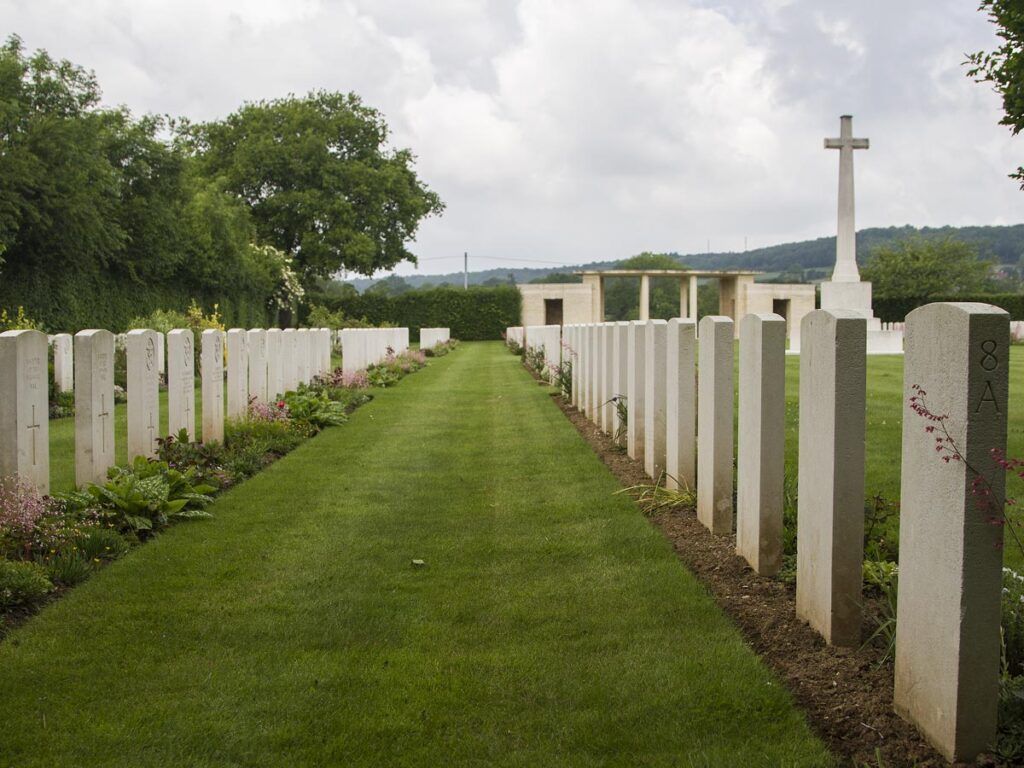
Visitor Information
Opening hours: The cemetery is open daily from sunrise to sunset. No admission fee is required to enter, making it accessible to all visitors.
Facilities at St. Charles de Percy are limited. There are no toilet facilities on-site, so plan accordingly by using restrooms in nearby towns before arriving. The cemetery has a visitor register where you can leave your thoughts and respects.
The Commonwealth War Graves Commission maintains the site beautifully. You’ll find 809 Second World War burials here, primarily soldiers who fell during late July and early August 1944 operations.
Photography is permitted, but maintain respectful behavior as this is a place of remembrance. The site is wheelchair accessible, with paved pathways throughout most areas.
Nearby Accommodations
The rural location means limited immediate accommodation options, but several charming choices exist within a short drive:
Recommended hotels:
For more options, consider staying in Caen (44 km) which offers everything from budget hotels to luxury accommodations. This makes a good base for exploring multiple Normandy sites.
Book accommodations well in advance during summer months and D-Day anniversary events when availability becomes limited.
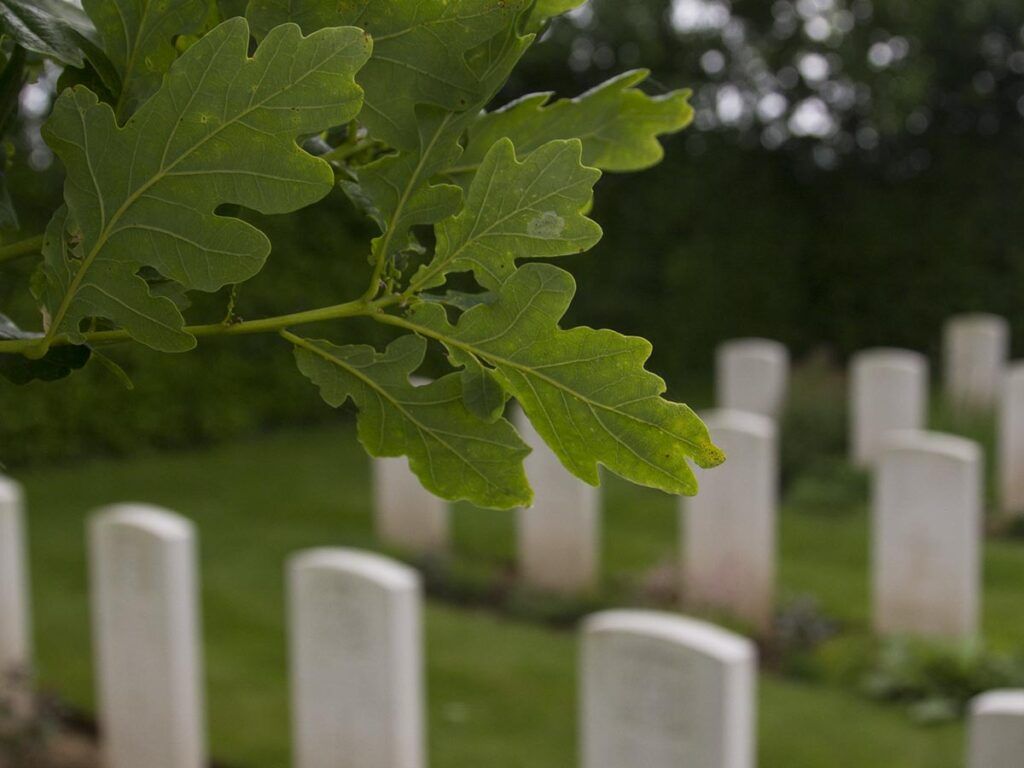
Tours
Guided tours provide valuable historical context to enhance your visit. Several options are available:
Battlefield Tours: Specialized WW2 tours include St. Charles de Percy alongside other Normandy Campaign sites. Companies like Bayeux Shuttle and Normandy Battlefields Tours offer knowledgeable guides.
Self-Guided Options: Download audio guides or use detailed guidebooks if you prefer exploring at your own pace. The Commonwealth War Graves Commission website offers helpful information for self-guided visits.
Custom Private Tours: For the most personalized experience, hire a local historian for a private tour. They can tailor the narrative to your specific interests in the Normandy Campaign.
Recommended D-Day Tours from Paris:
- From Paris: Normandy D-Day Beaches Day Trip
- From Paris: 2-Day Normandy & Brittany Tour
- Normandy American D-Day Experience (From Bayeux Station)
Recommended D-Day Tours from Bayeux:
- From Bayeux: American D-Day Sites in Normandy Full-Day Tour
- From Bayeux: American D-Day Sites in Normandy Half-Day Tour
- From Bayeux: Half-Day Normandy WWII Sidecar Tour
- Full-Day US Battlefields of Normandy Tour from Bayeux
Recommended Private D-Day Tours:
- From Paris: Normandy D-Day Landing Beaches Full-Day Tour
- From Rouen: Normandy D-Day Beaches Private Full-Day Tour
- Private Tour: Rouen, Bayeux, and Falaise Day Trip from Bayeux
- Normandy WWII Private Half-day Sidecar Tour From Bayeux
Recommended Band of Brothers Tours:
Consider booking half-day tours that combine this cemetery with nearby memorials for a more comprehensive understanding of the region’s wartime significance.
Nearby Attractions
While visiting St. Charles de Percy War Cemetery, you’ll find several significant World War II sites within driving distance. The Normandy region offers deeply moving experiences that connect visitors to the events of D-Day and the Battle of Normandy.
Omaha Beach
Omaha Beach presents one of the most powerful D-Day experiences in Normandy. You can walk the same shoreline where American forces faced fierce resistance on June 6, 1944.
The beach still displays rusted remnants of German fortifications, silent witnesses to the brutal fighting. These weathered defenses help you visualize the obstacles troops encountered during the landings.
The sweeping views of the English Channel provide perspective on the massive scale of the Allied invasion. Take time to sit quietly on the beach and reflect on the young soldiers who fought here.
The nearby American Cemetery at Colleville-sur-Mer holds the graves of 9,388 servicemen. Its meticulously maintained rows of white crosses and Stars of David create a poignant memorial landscape.
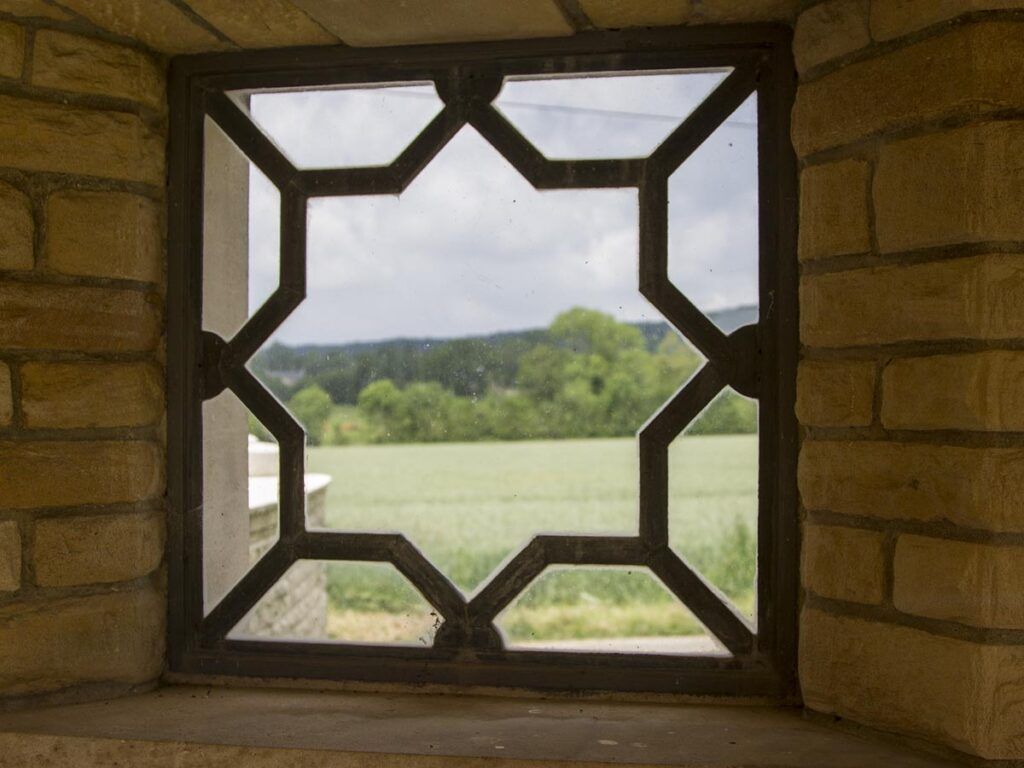
Other War Memorials
The region contains several less-crowded but equally moving war memorials. Ranville War Cemetery and Churchyard hold some of the earliest D-Day casualties, particularly from British airborne units.
The 1st Battalion Scots Guards memorial near Caen honors the specialized infantry who fought through Normandy’s hedgerow country. Their contribution to the campaign often goes overlooked by casual visitors.
For those willing to travel further, the Thiepval Memorial commemorates the missing of the Somme. This massive brick structure bears the names of over 72,000 officers and men with no known grave.
The Ypres (Menin Gate) Memorial in Belgium and Runnymede Memorial in England also honor those with no known grave. These sites connect the sacrifice of two world wars across the European landscape.
Museums and Historic Sites
The Memorial Museum of the Battle of Normandy in Bayeux offers comprehensive exhibits on the entire campaign. You’ll find detailed explanations of military strategy alongside powerful personal stories.
Caen’s Memorial Museum provides broader context for understanding World War II. Its thoughtful exhibits examine the war’s causes and consequences beyond just military operations.
The D-Day Experience in Saint-Côme-du-Mont features an immersive flight simulator. This unique attraction lets you experience a C-47 paratrooper flight over Normandy on D-Day night.
Small town museums throughout the region display local artifacts and stories. These intimate venues often reveal surprising connections between Allied soldiers and French civilians during the liberation.
The Pegasus Bridge Museum celebrates the glider troops who captured this crucial crossing. Their precision landing and swift victory marked one of D-Day’s few unqualified successes.
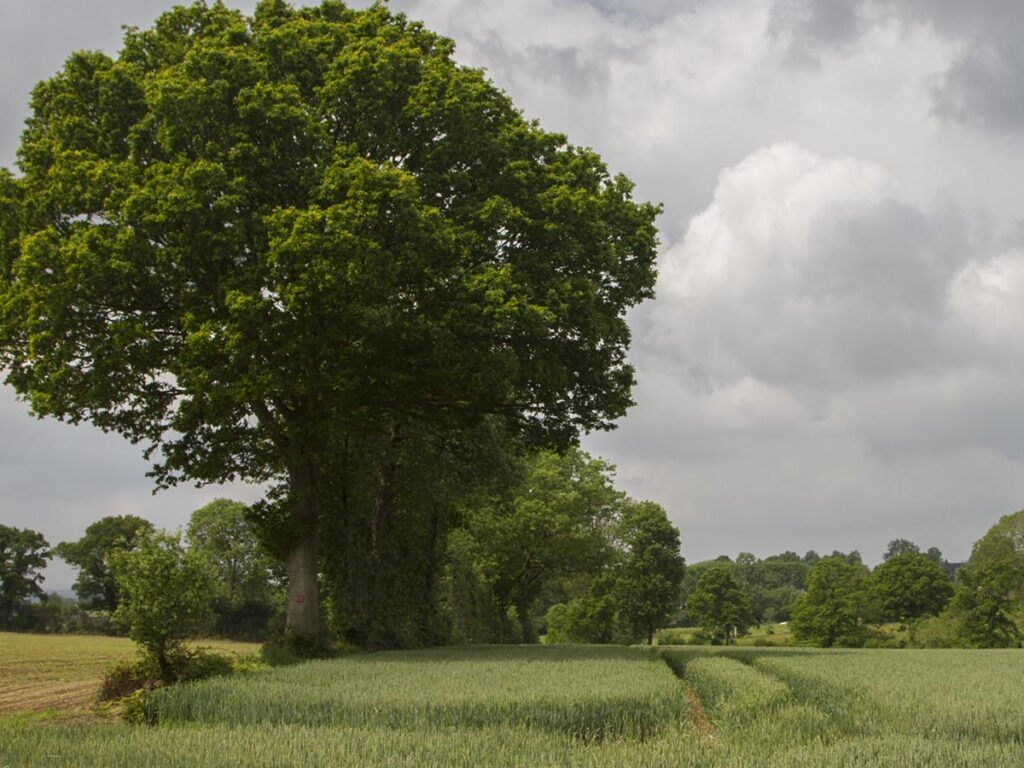
Why It’s Worth Visiting
St. Charles de Percy War Cemetery offers a deeply moving experience for visitors interested in World War II history. As the southernmost of the Normandy cemeteries, it holds a special place in remembering those who fought in the summer of 1944.
The cemetery contains 809 Second World War burials, mostly soldiers who fell during the intense fighting of late July and early August 1944. You’ll find a peaceful, well-maintained space that honors their sacrifice.
Located just 44 kilometers southwest of Caen on the D290A road, the cemetery is easily accessible during your Normandy explorations. Its serene setting provides a moment of reflection away from the busier D-Day beaches to the north.
What makes this site special:
- Historical significance: Represents the southern progress of Allied forces
- Peaceful atmosphere: Visitors often note the tranquil setting
- Natural beauty: The well-kept grounds serve as a haven for plants and wildlife
- Personal connections: Many visitors come to honor specific family members
You’ll appreciate the care taken to maintain this solemn place. The neatly arranged headstones and manicured grounds create a dignified tribute to the fallen.
For families with connections to those buried here, it’s an especially meaningful pilgrimage. Even without personal ties, you’ll find yourself moved by the scale of sacrifice represented in this quiet corner of Normandy.

